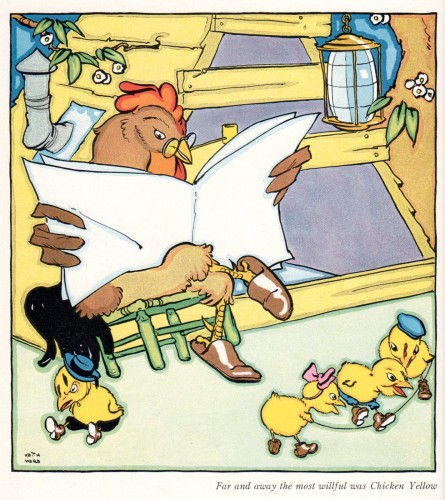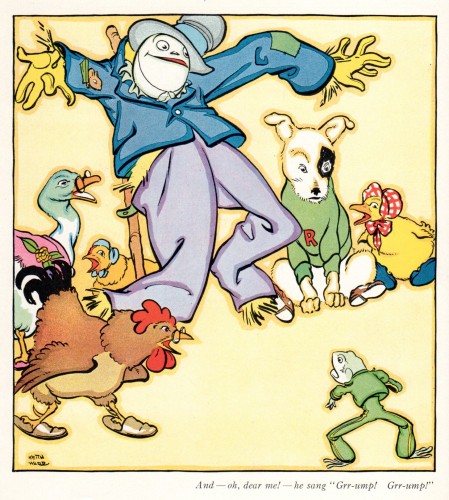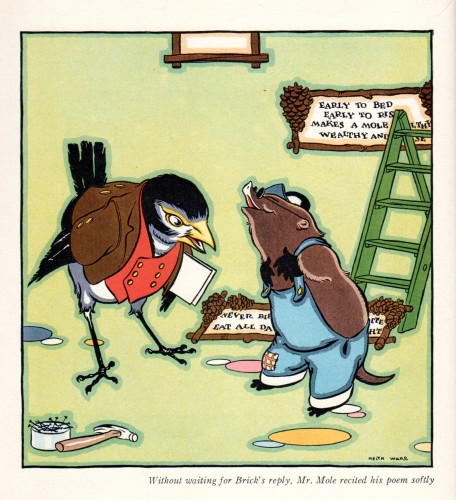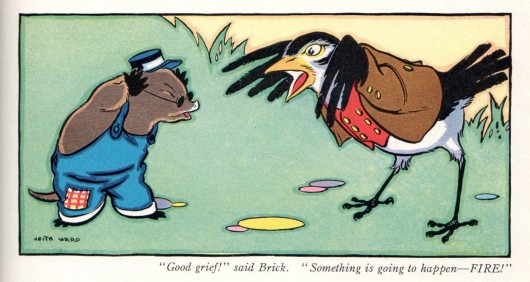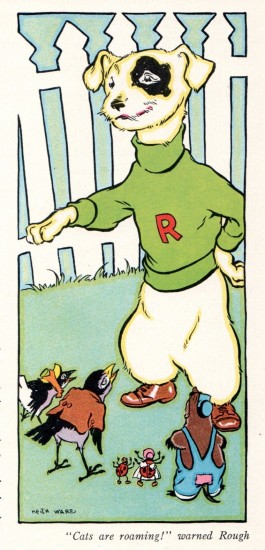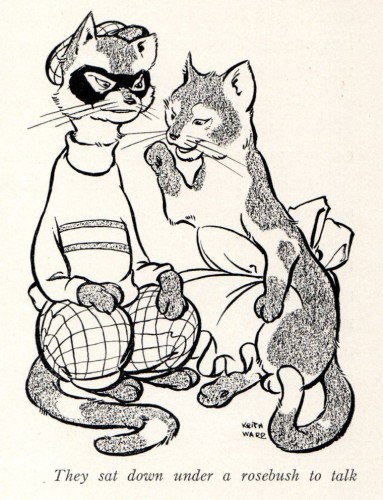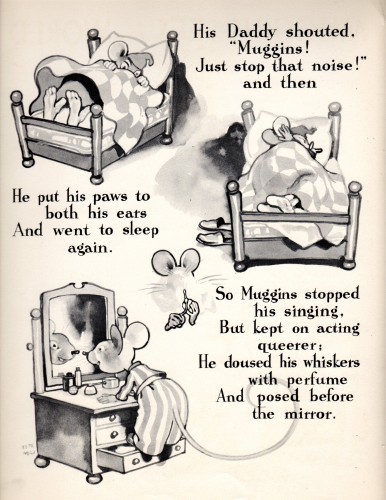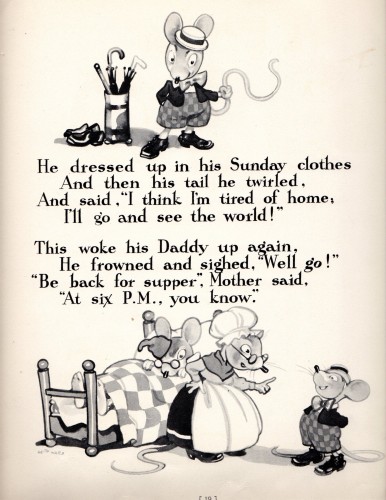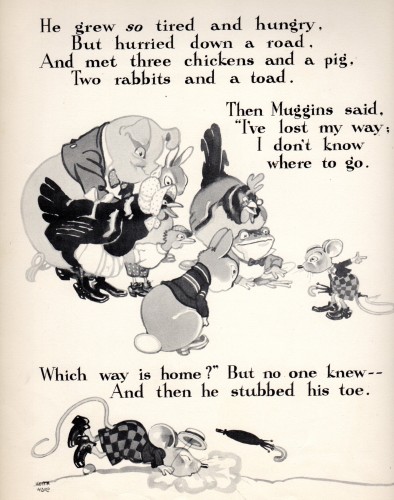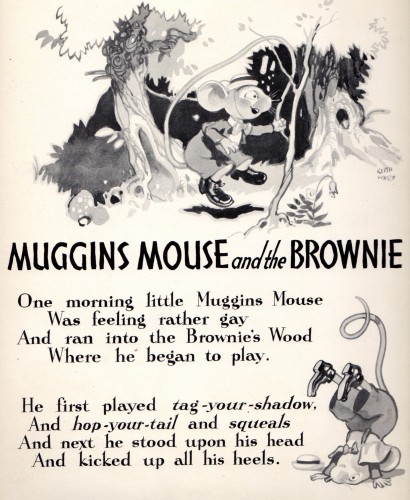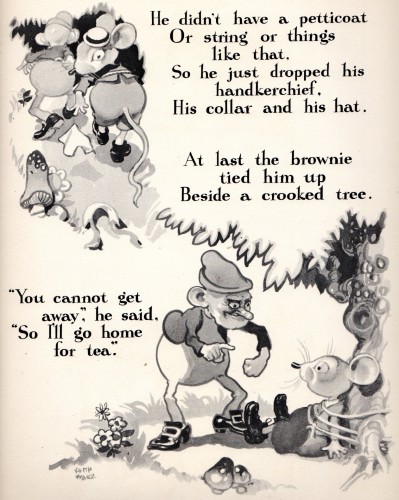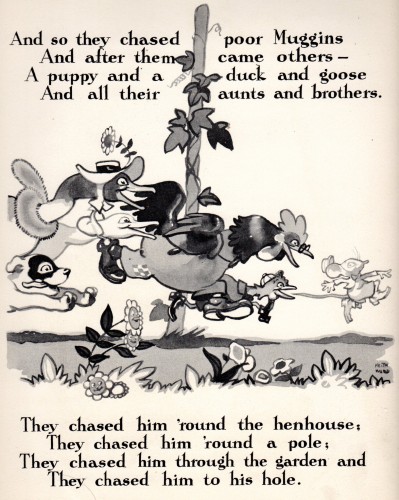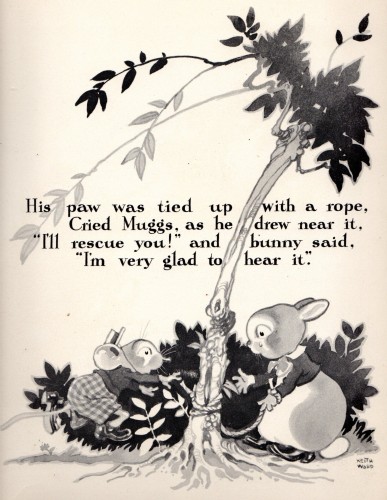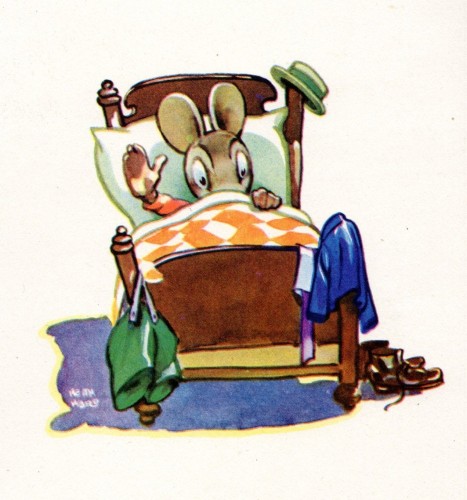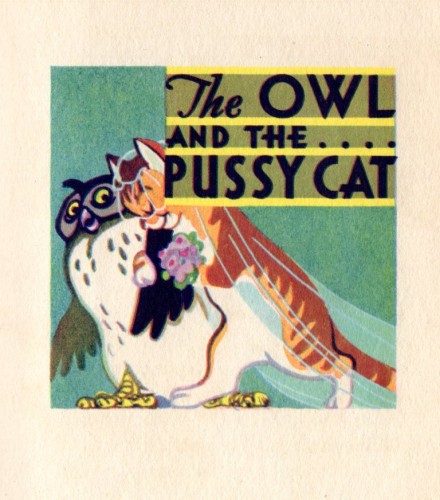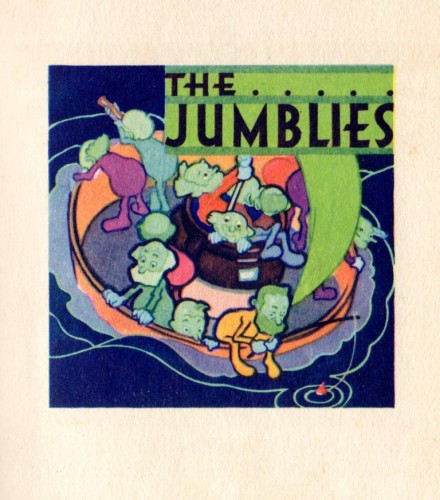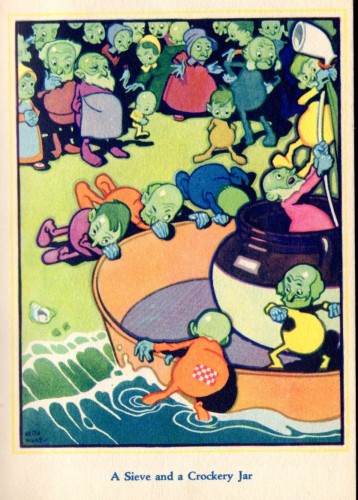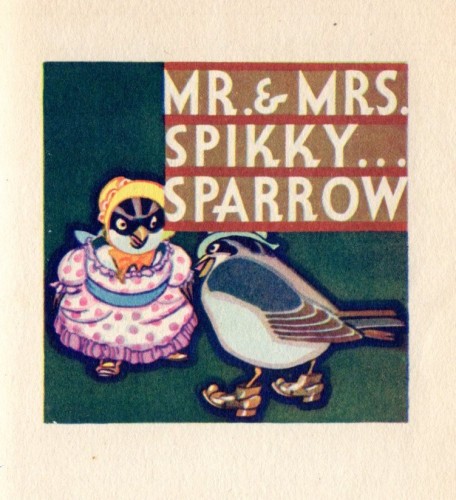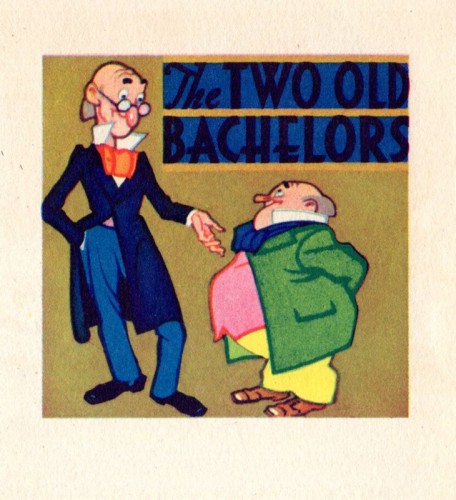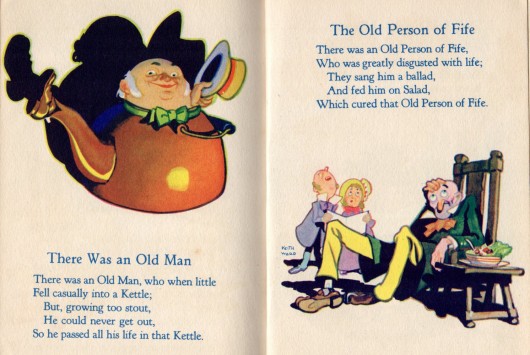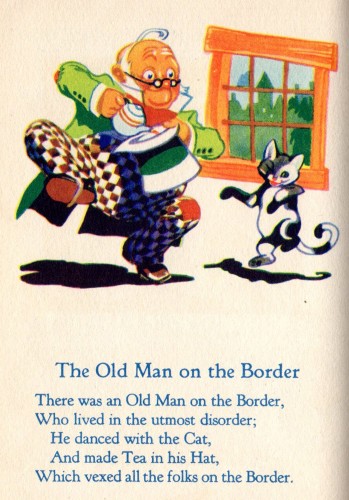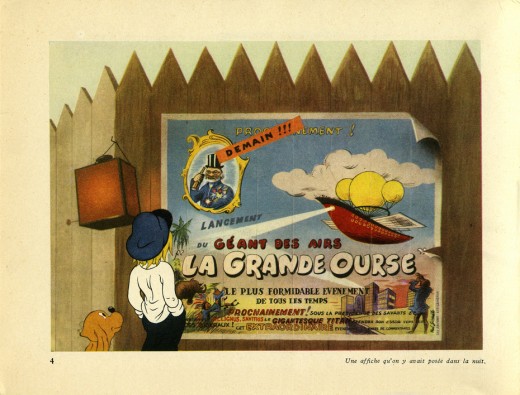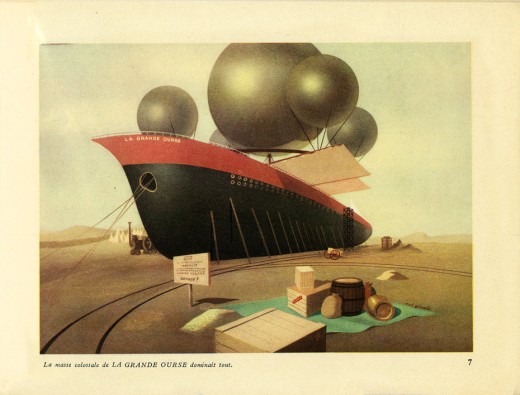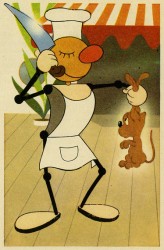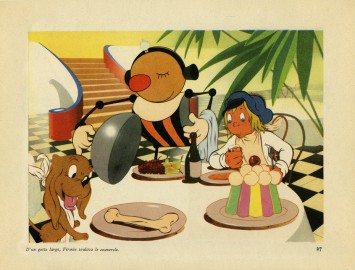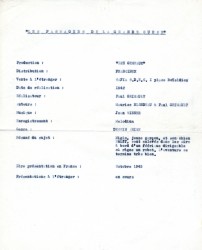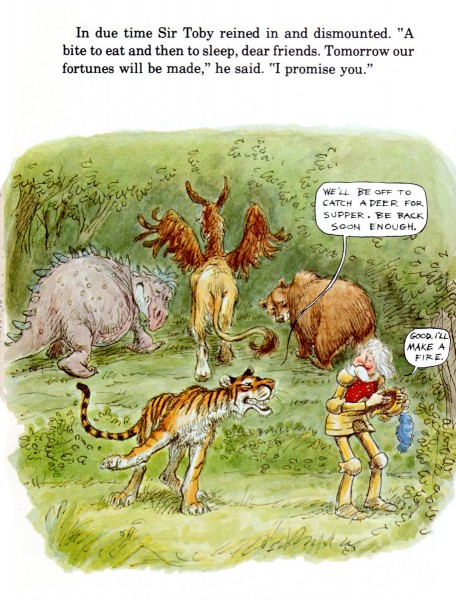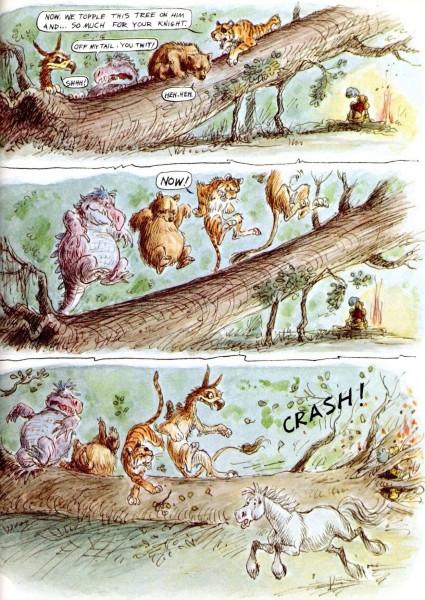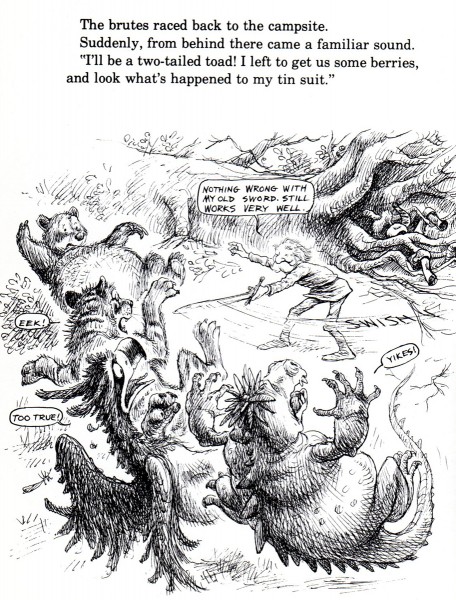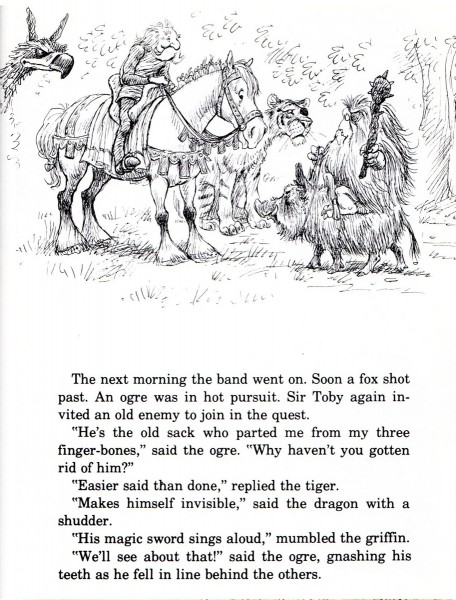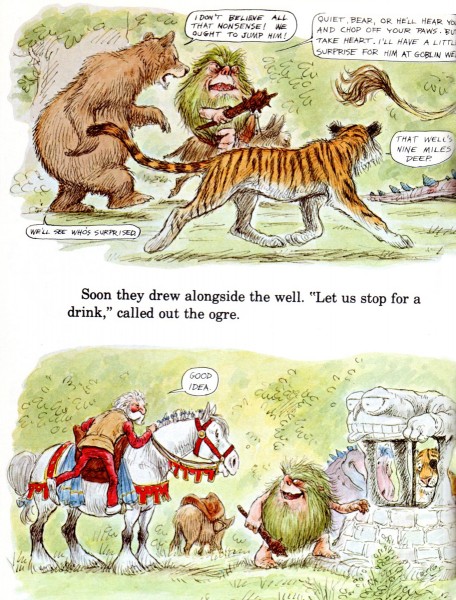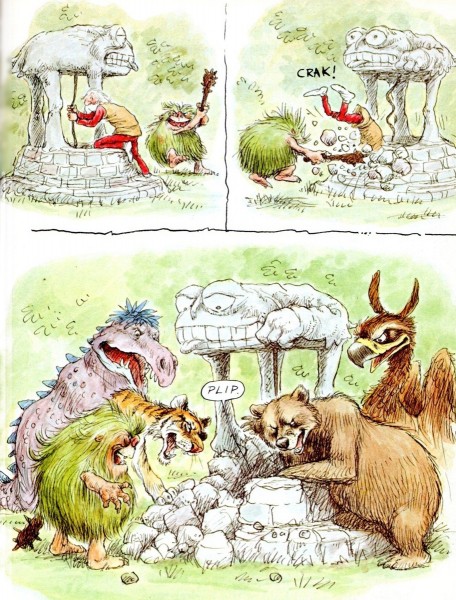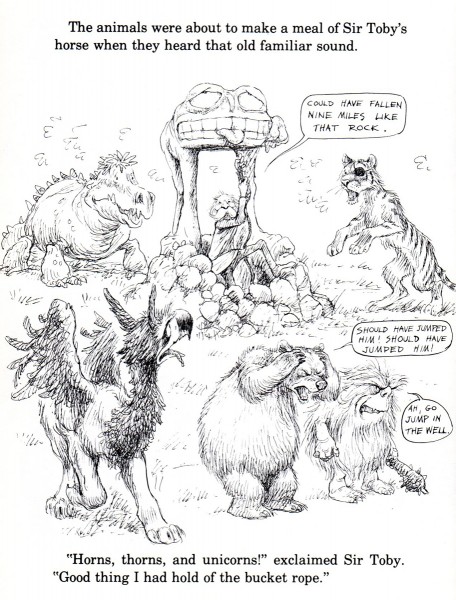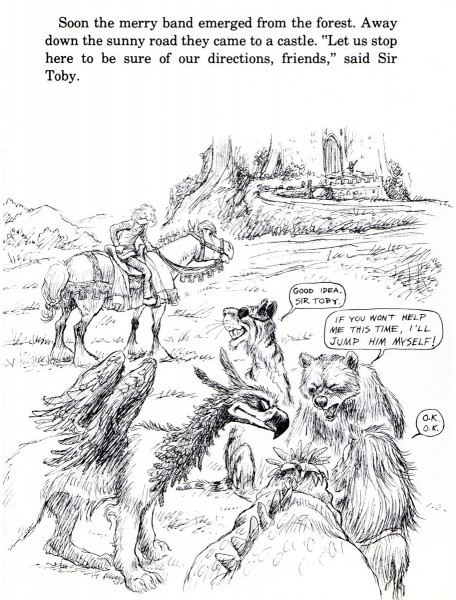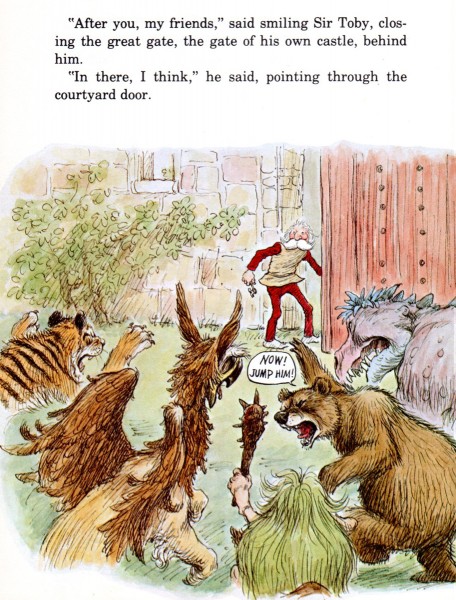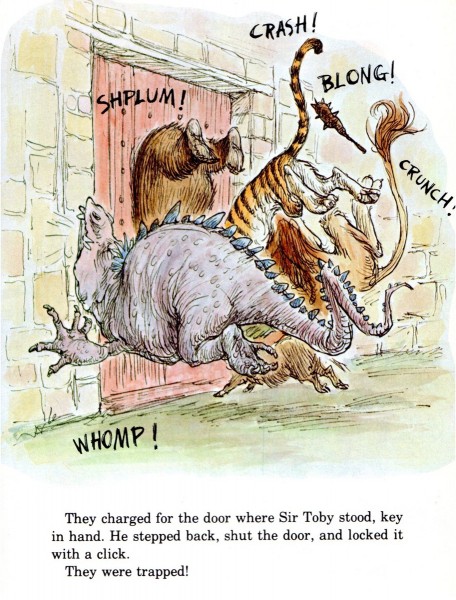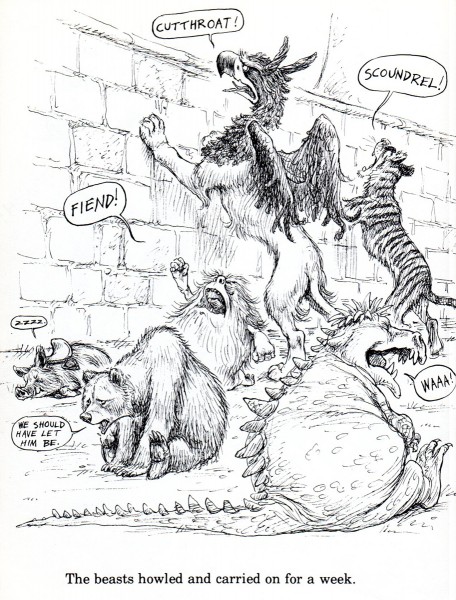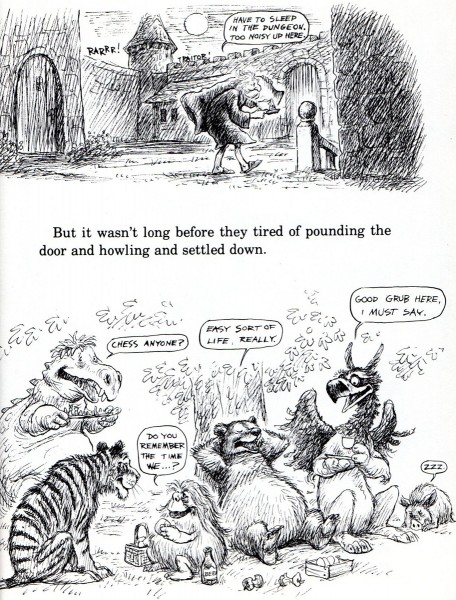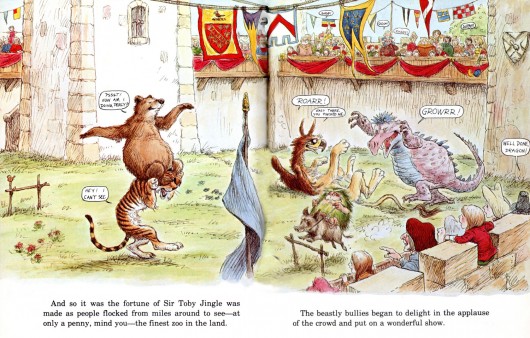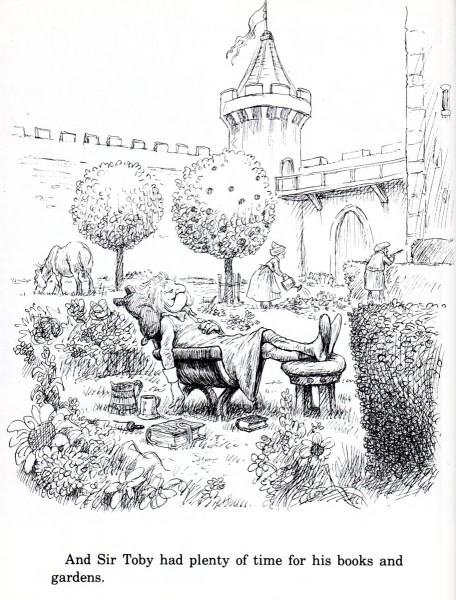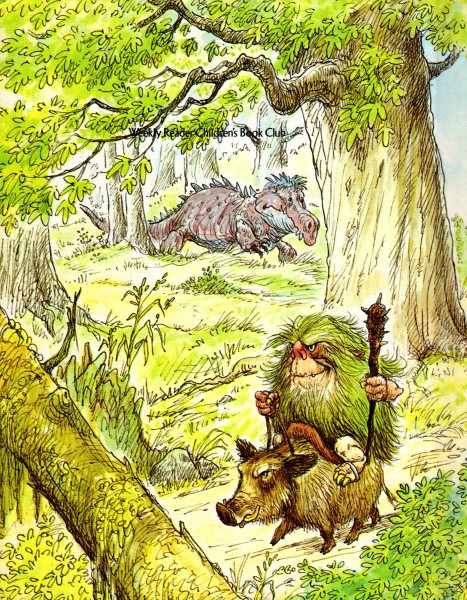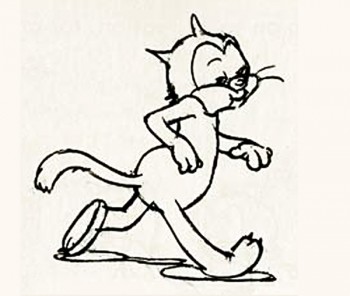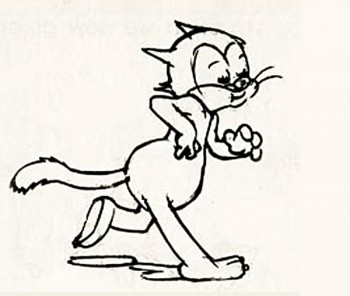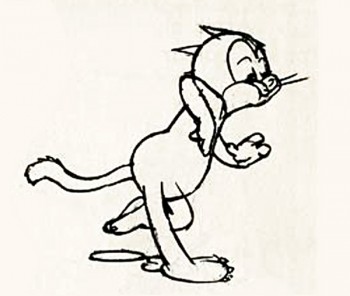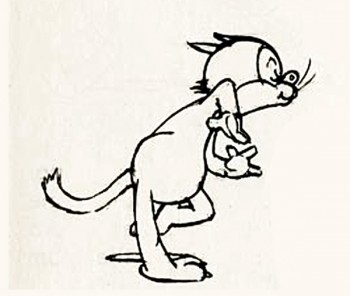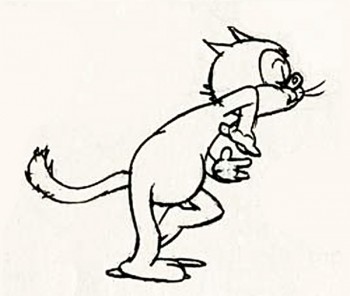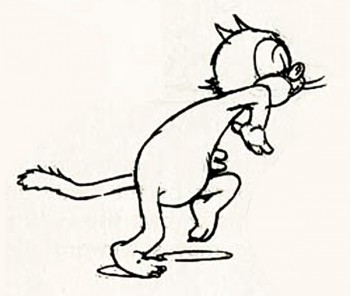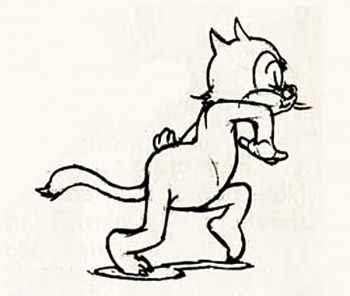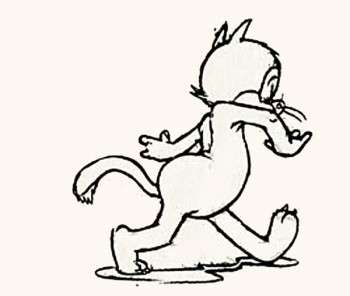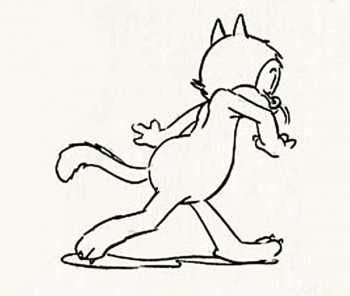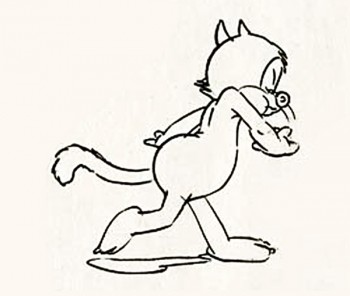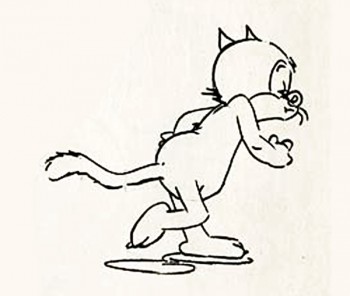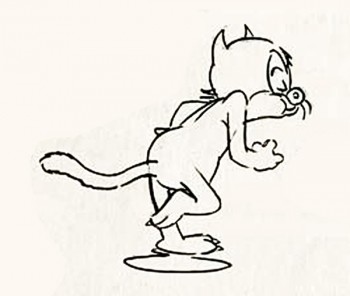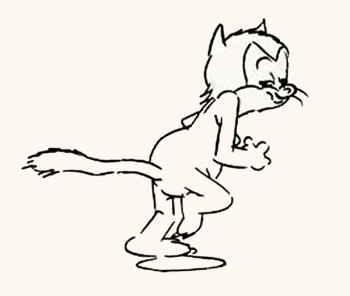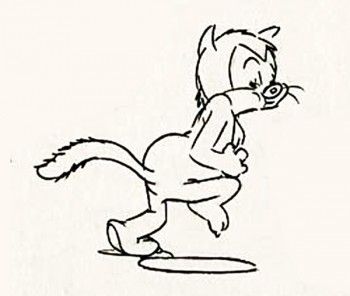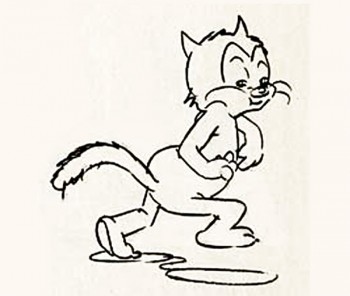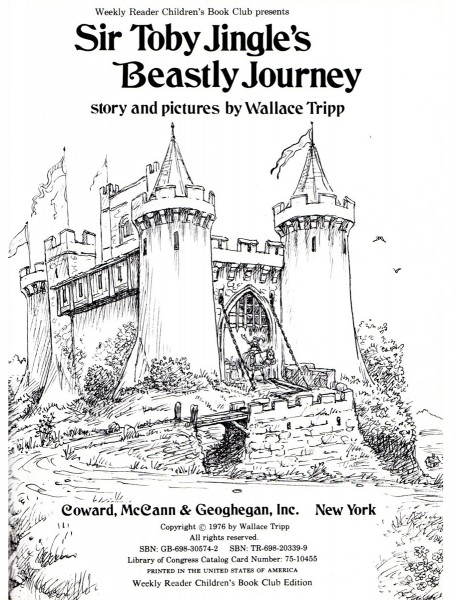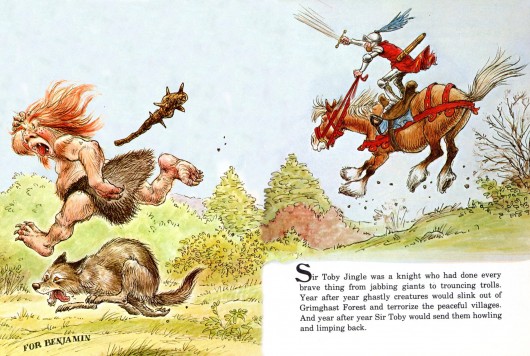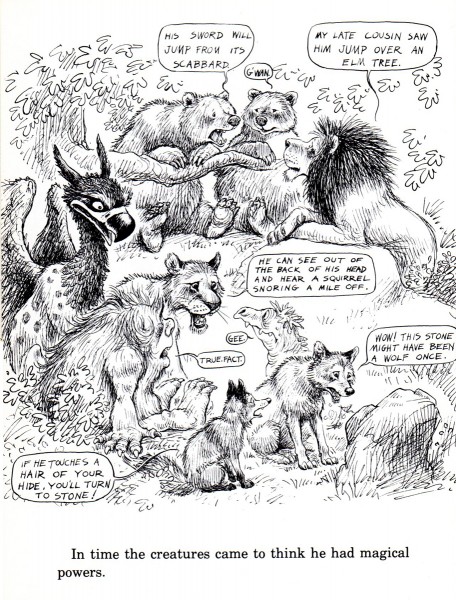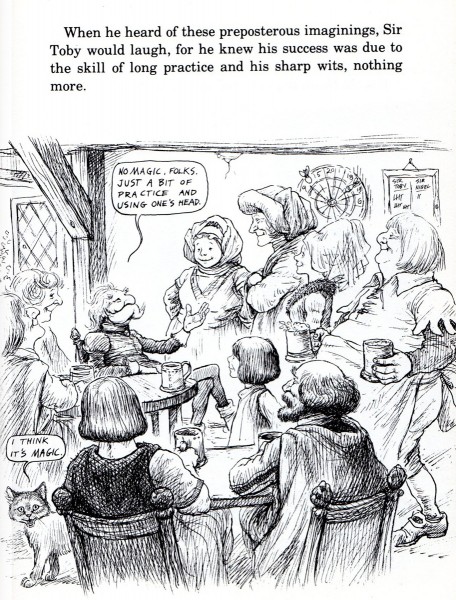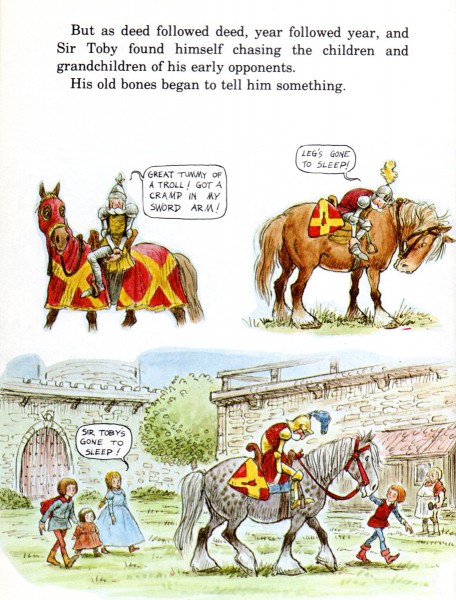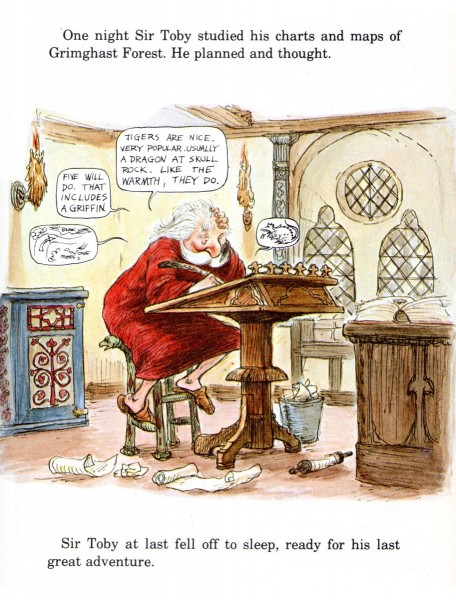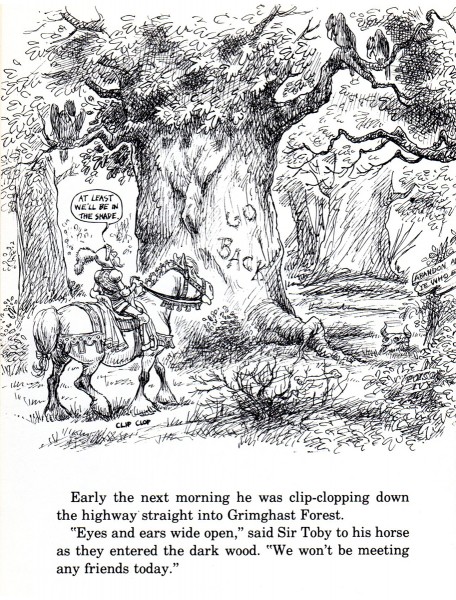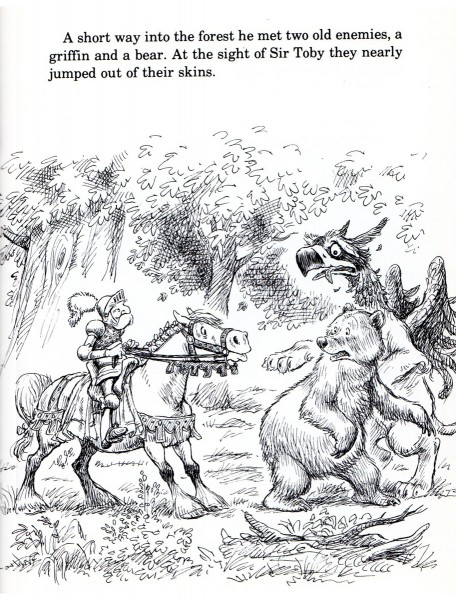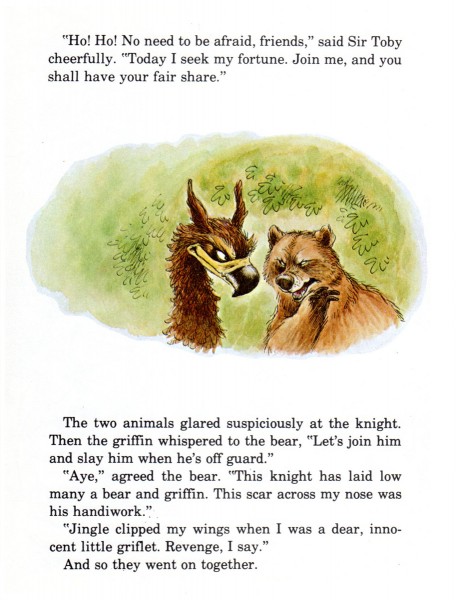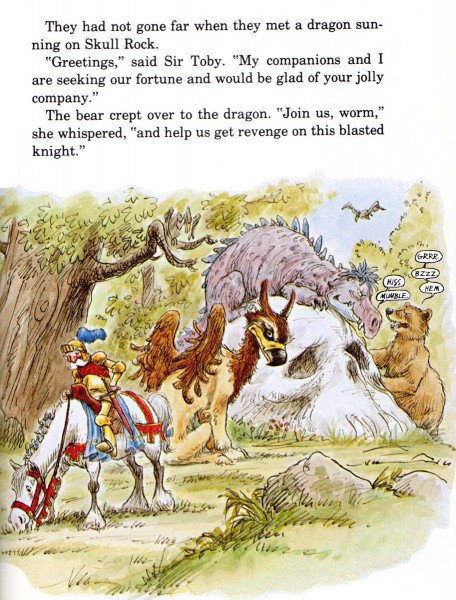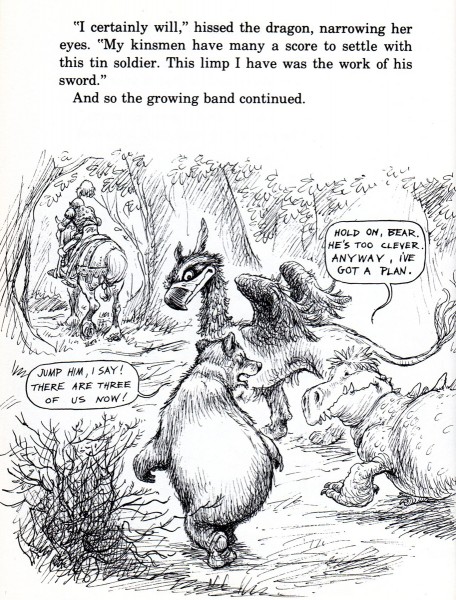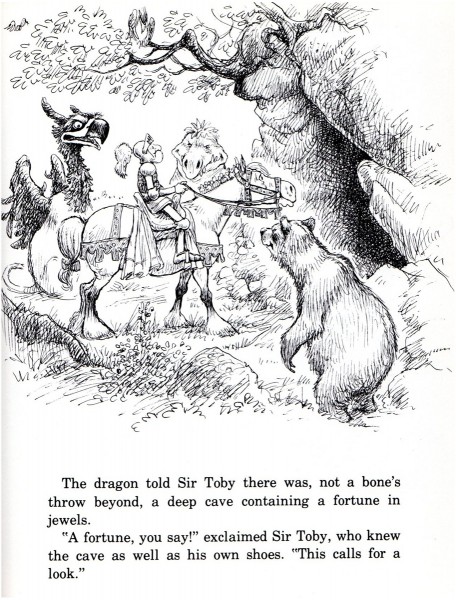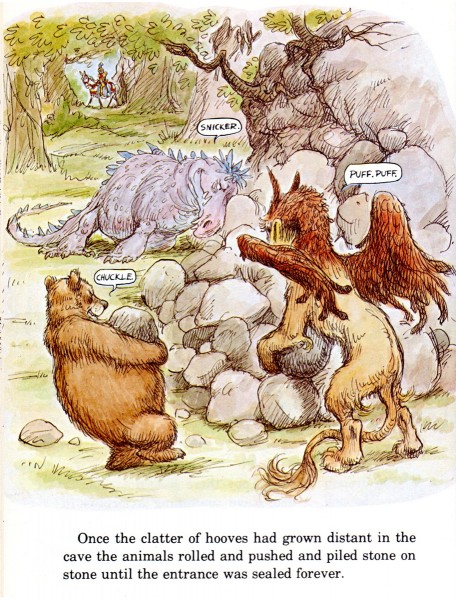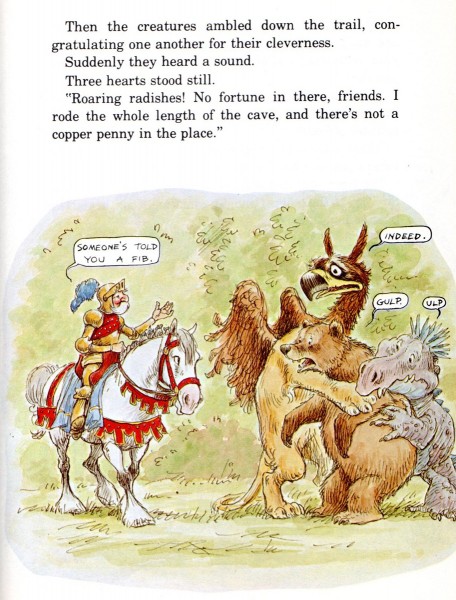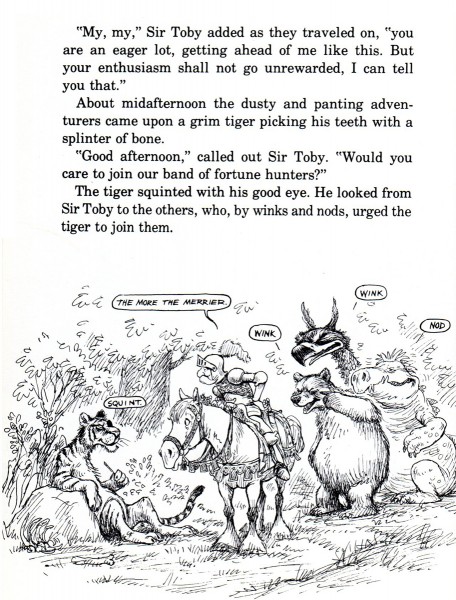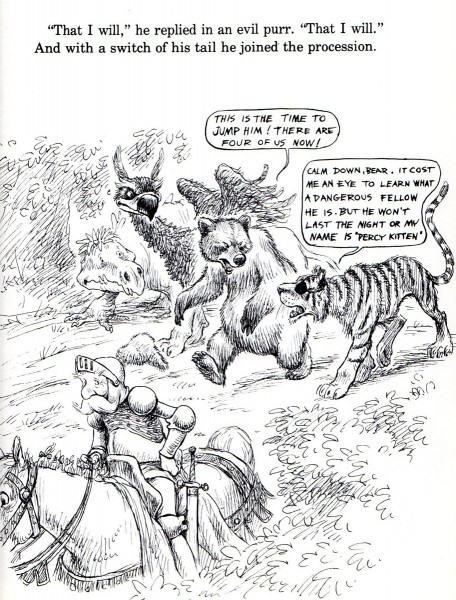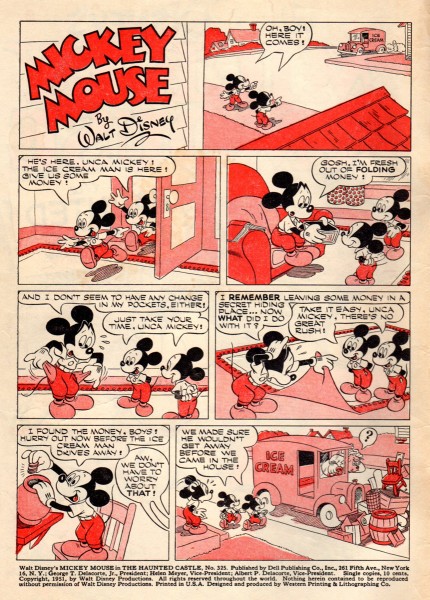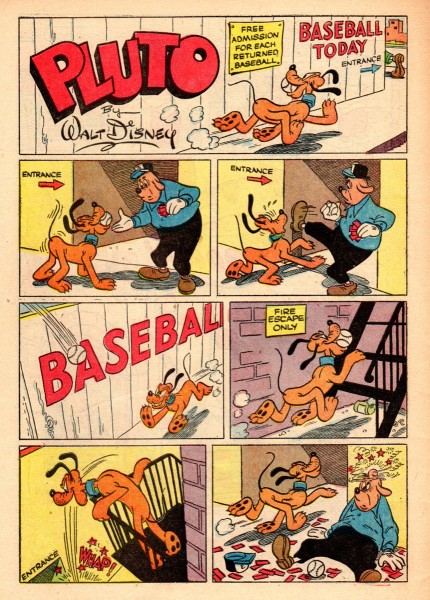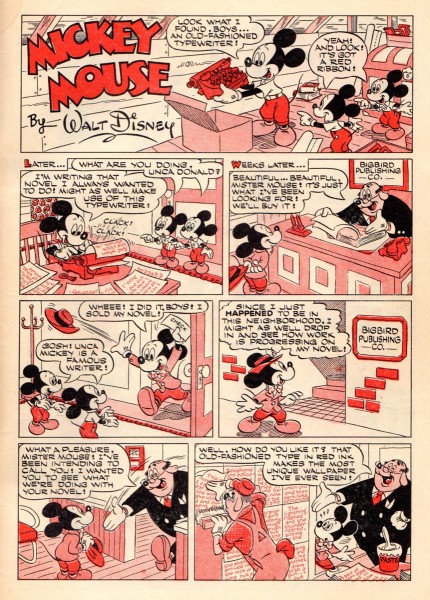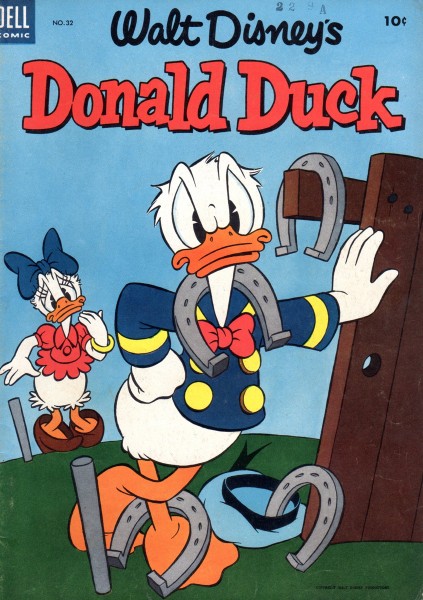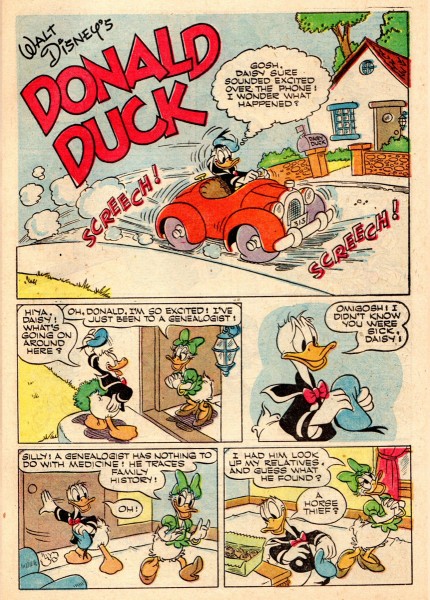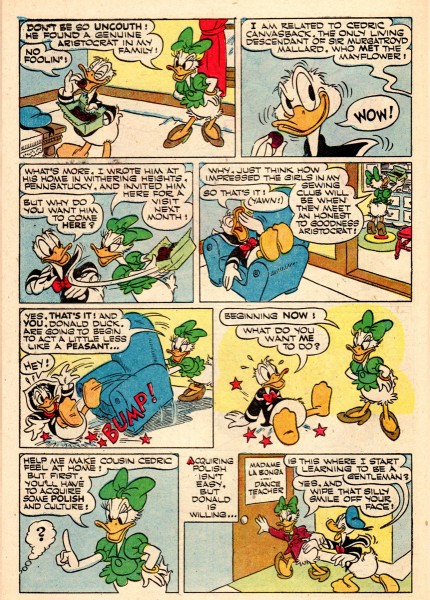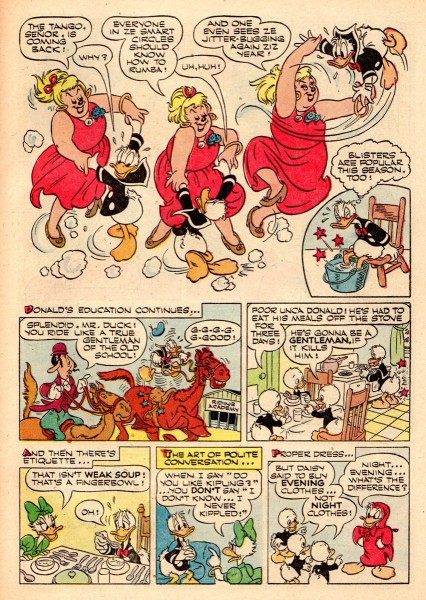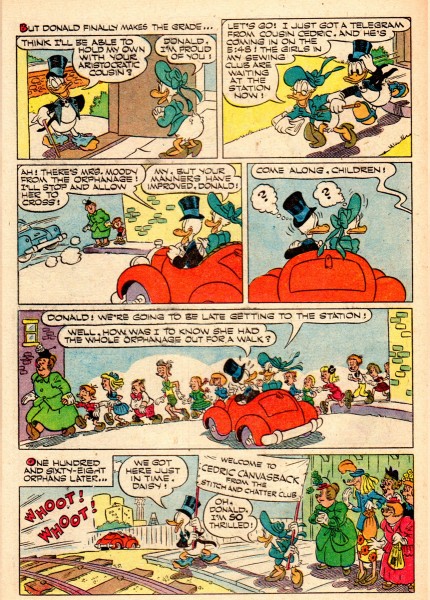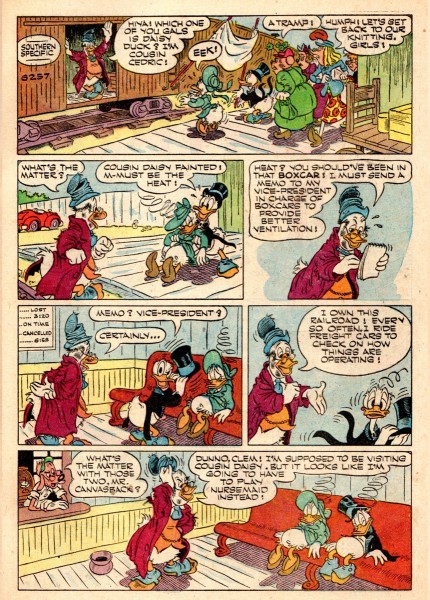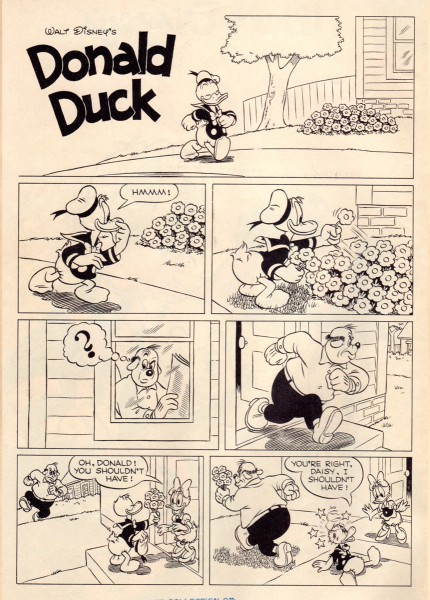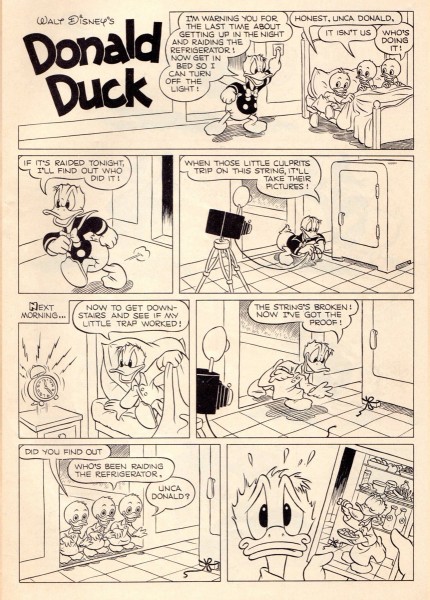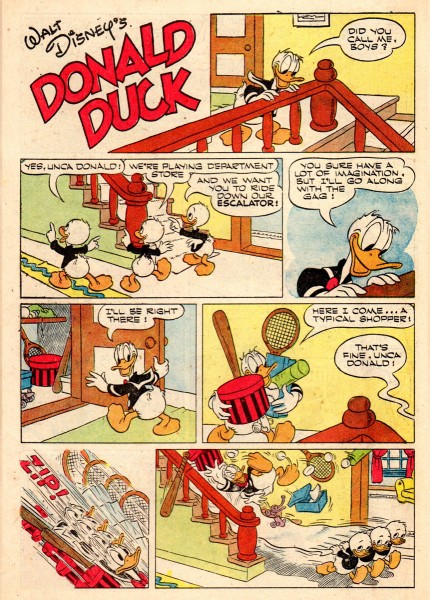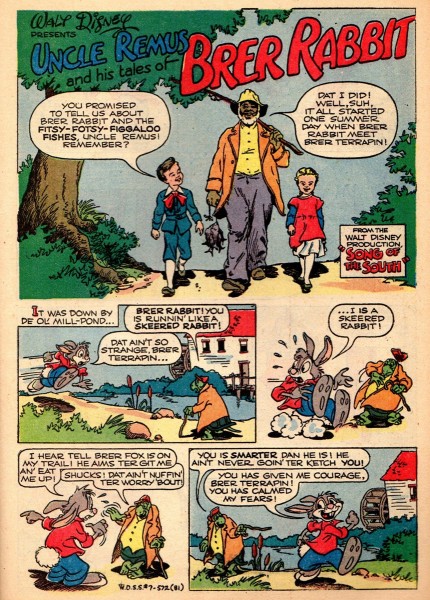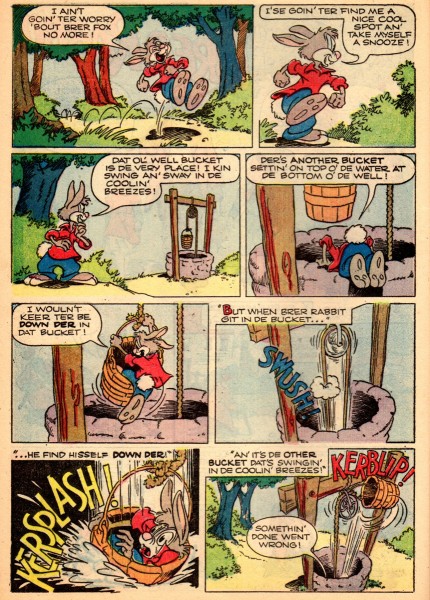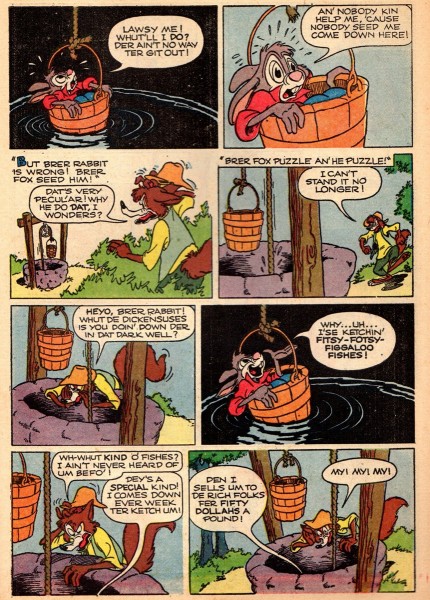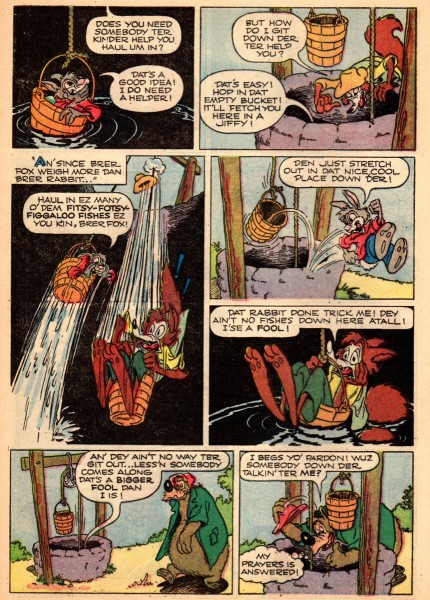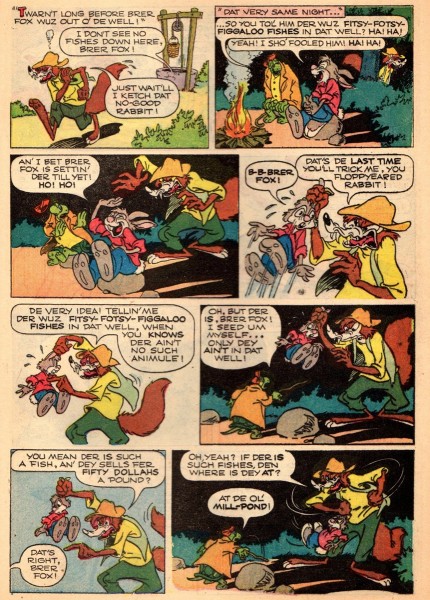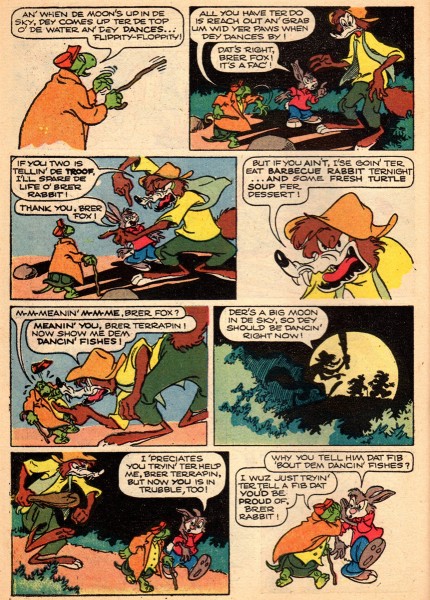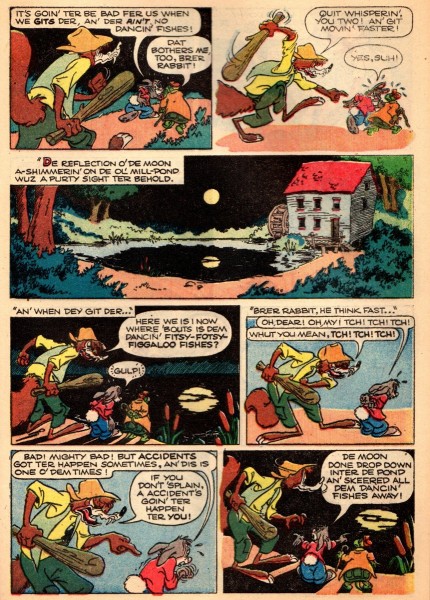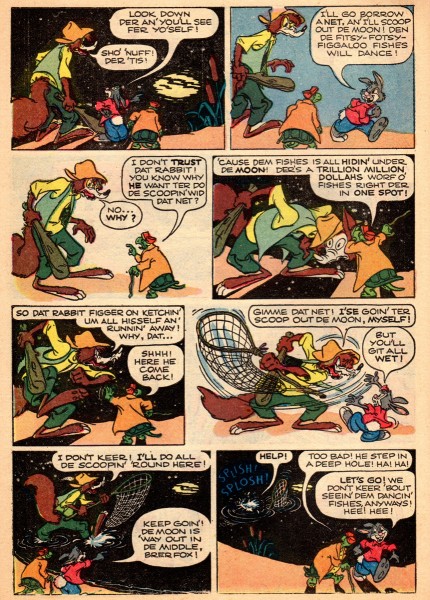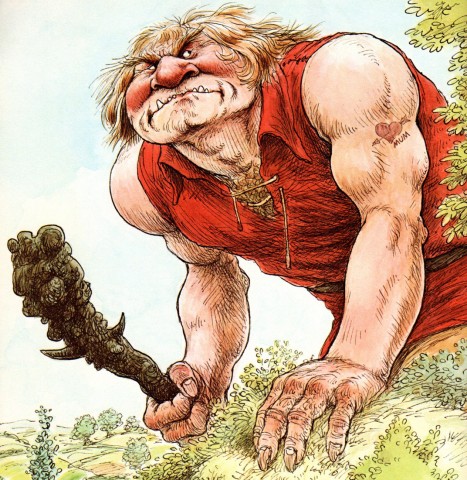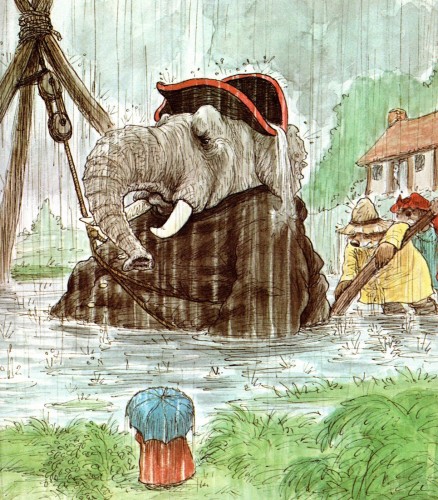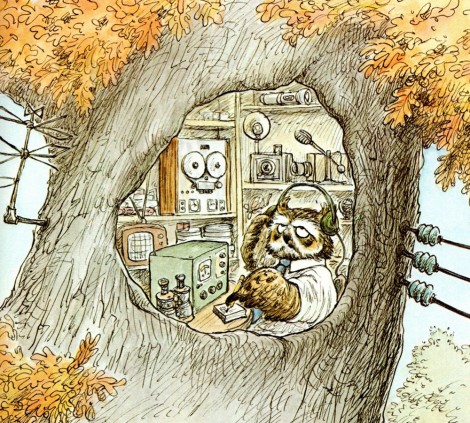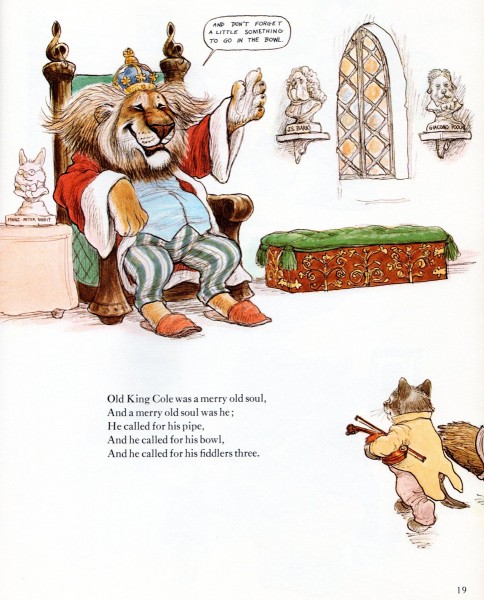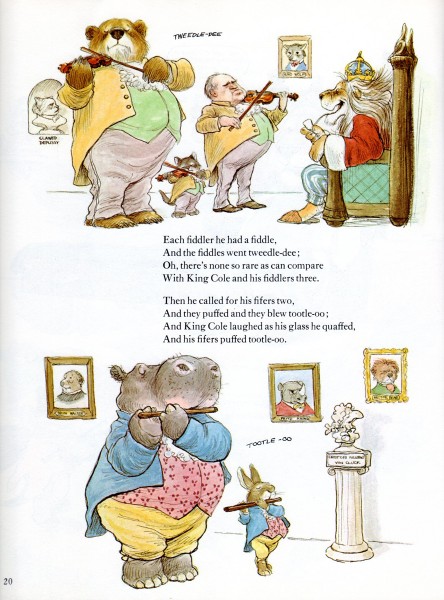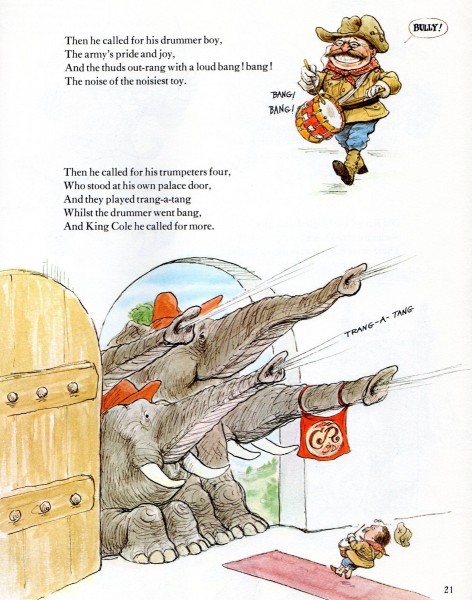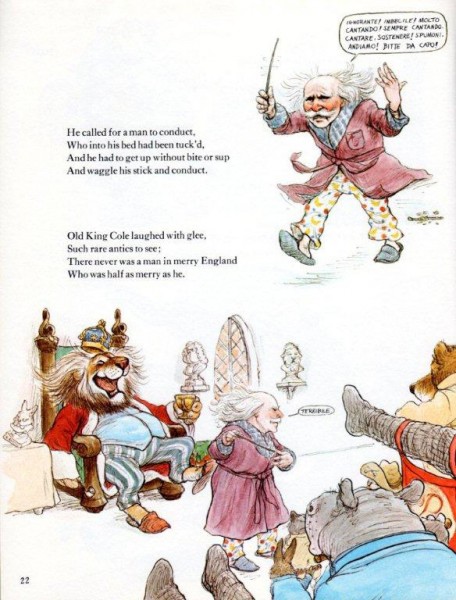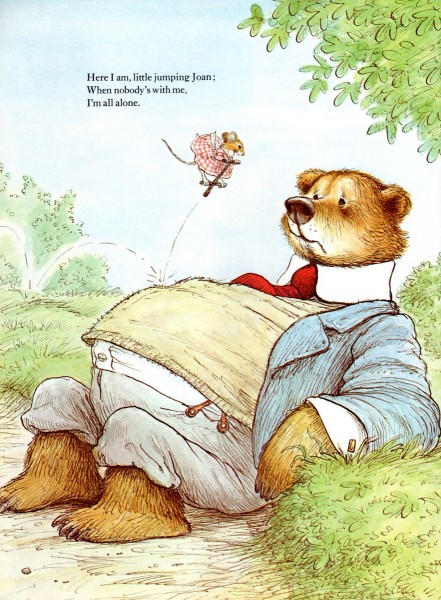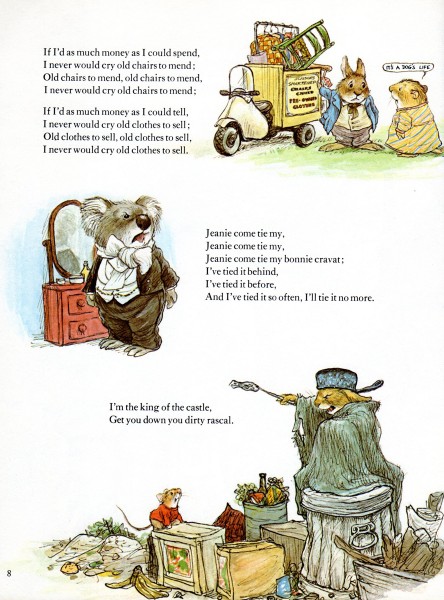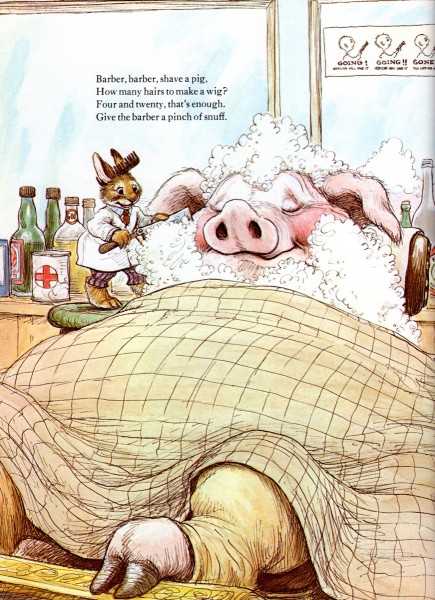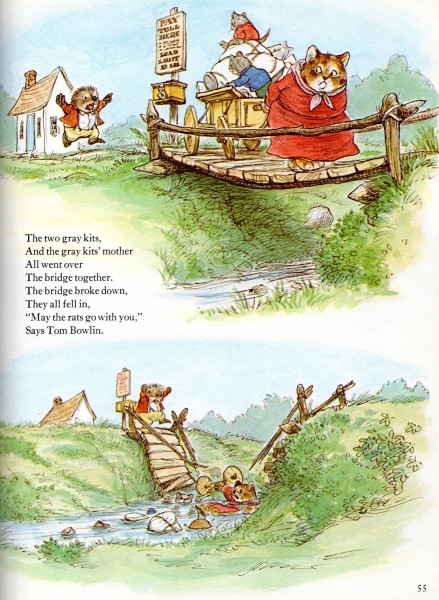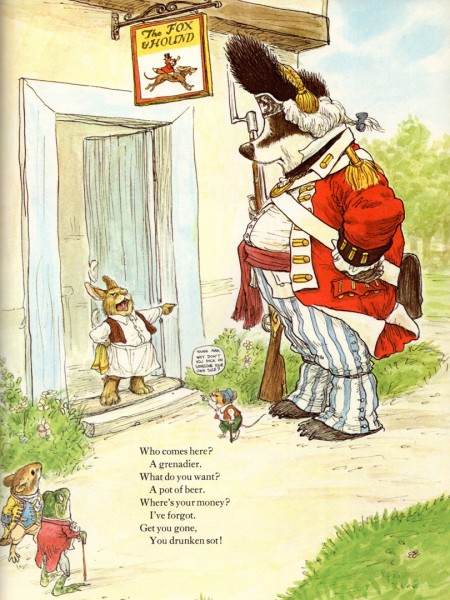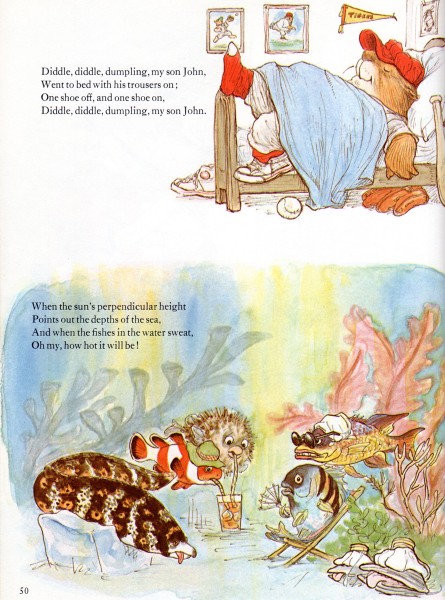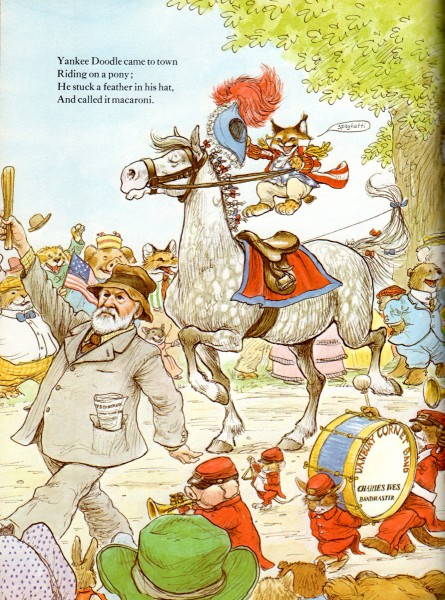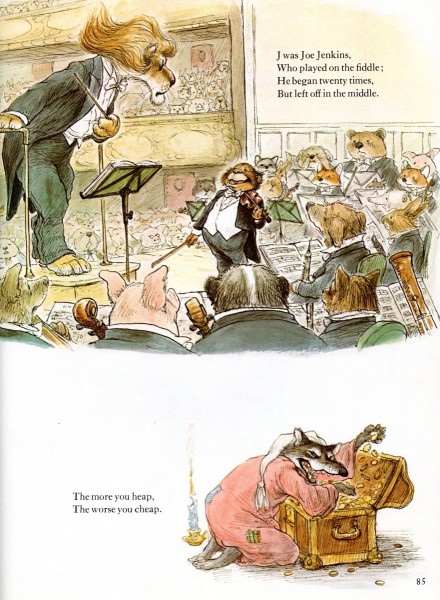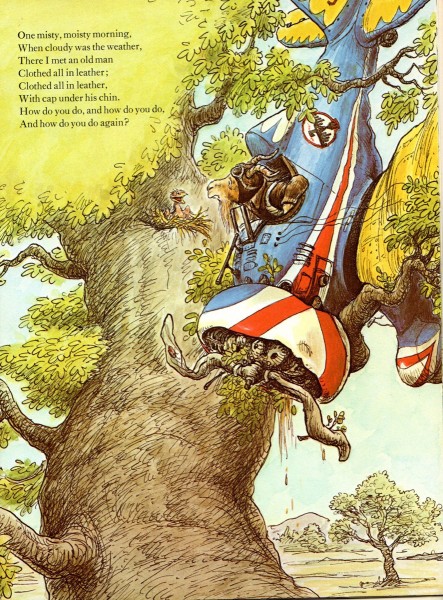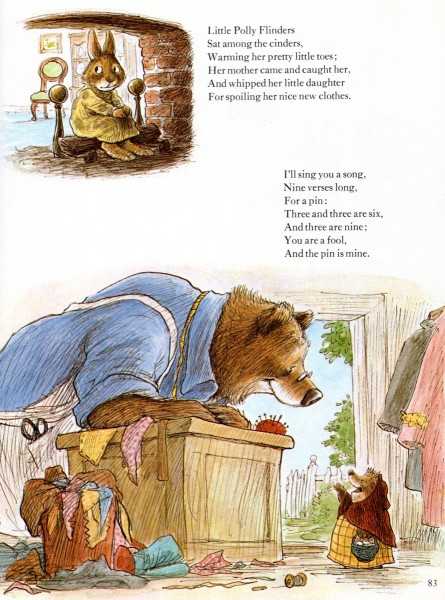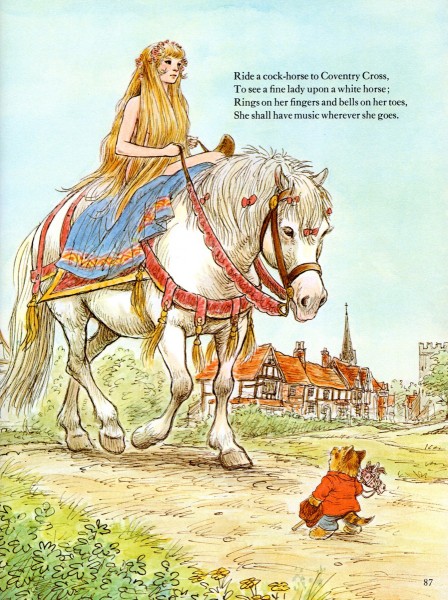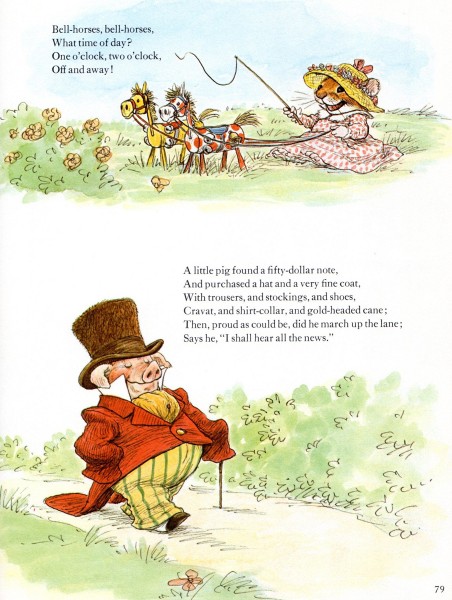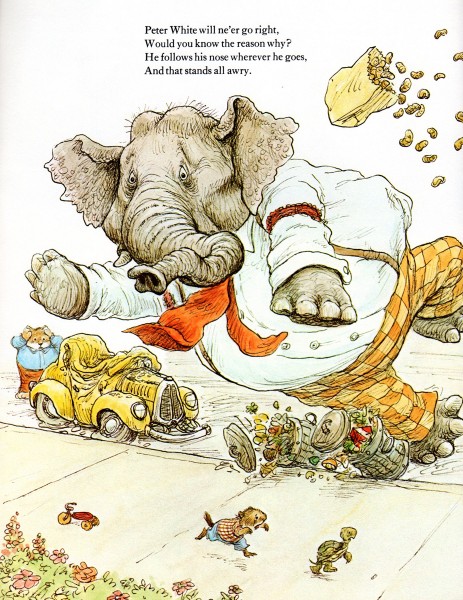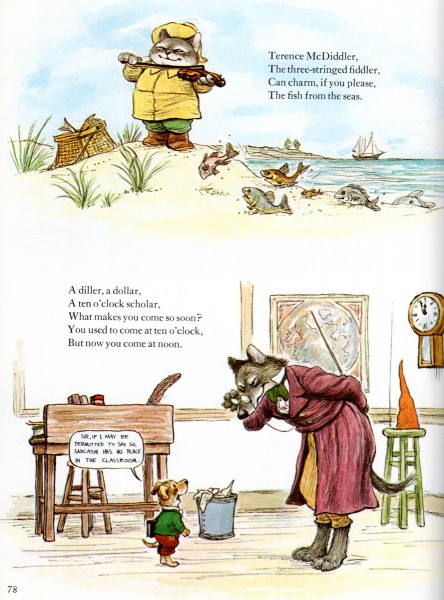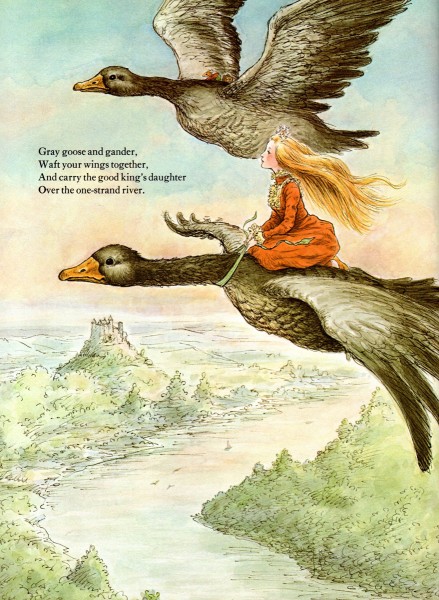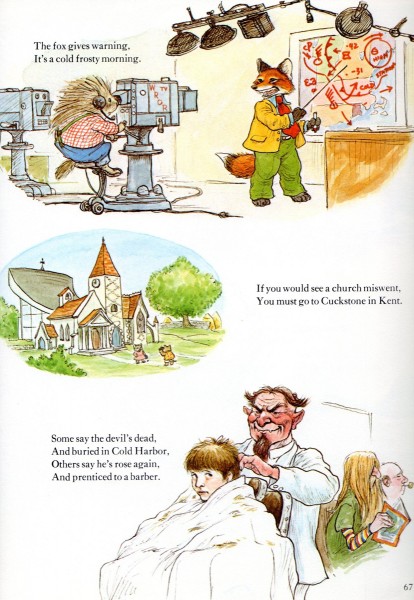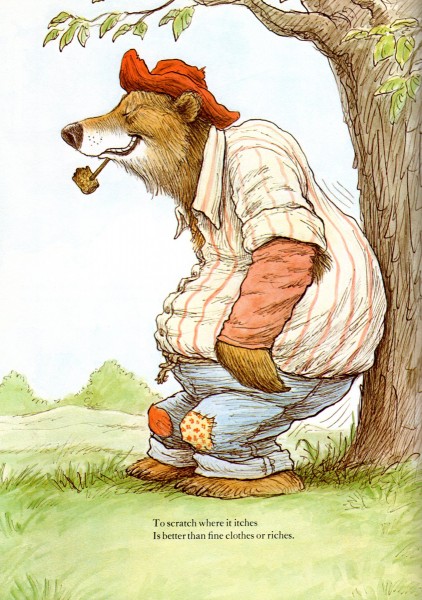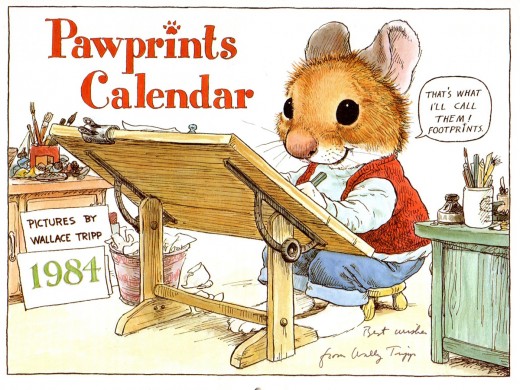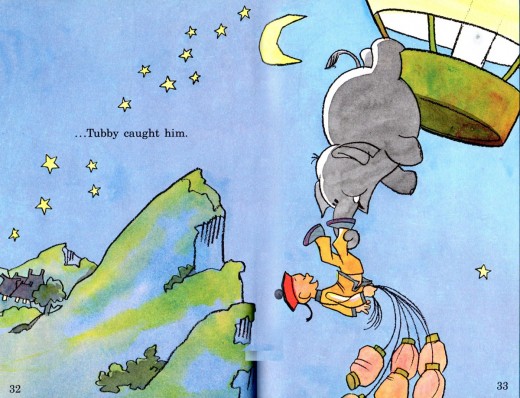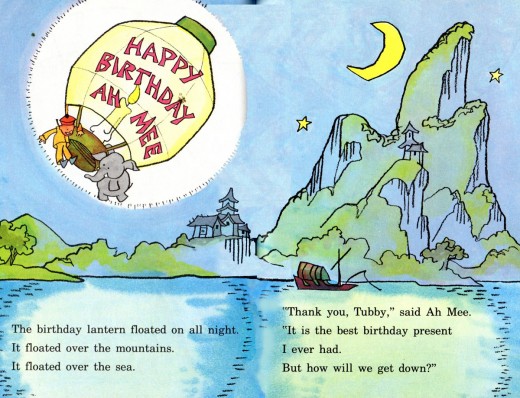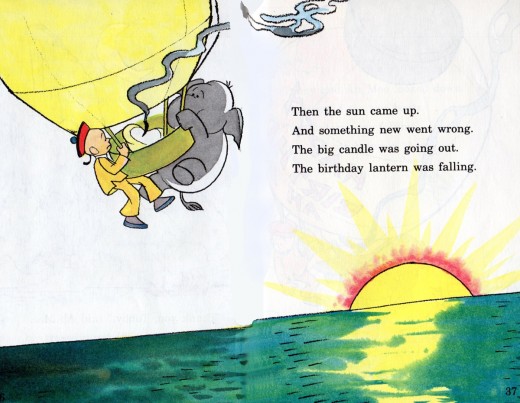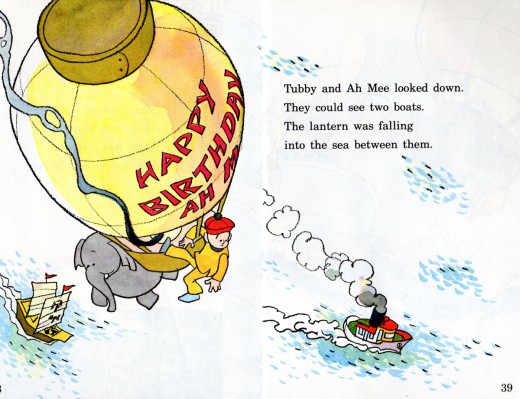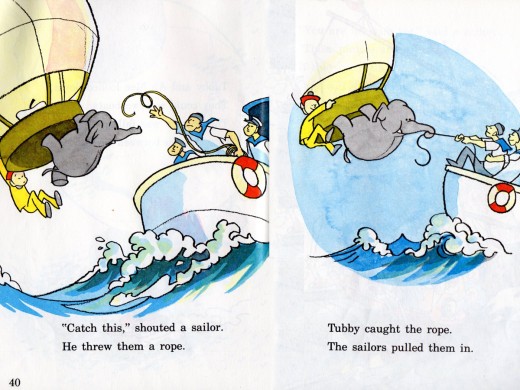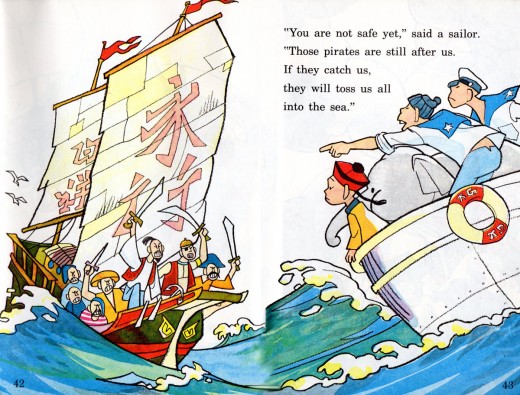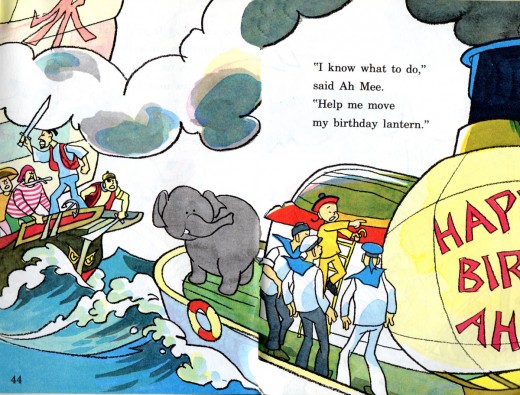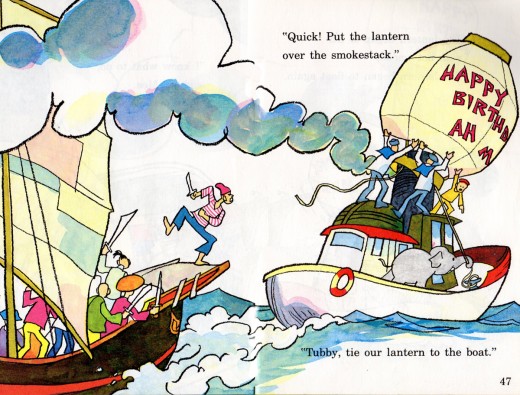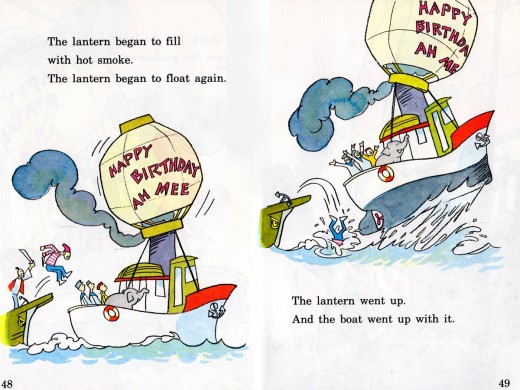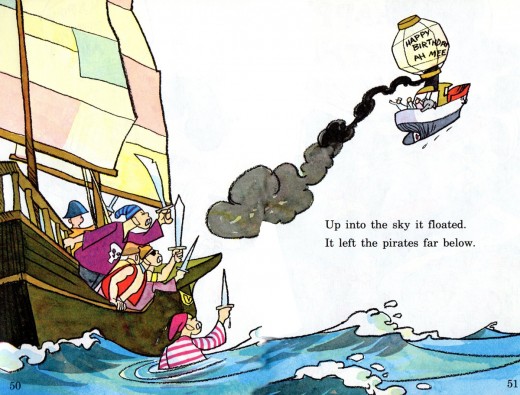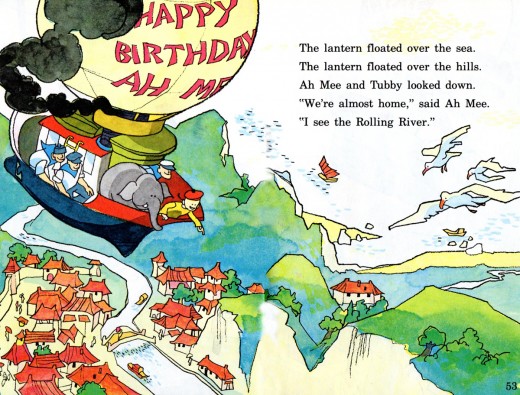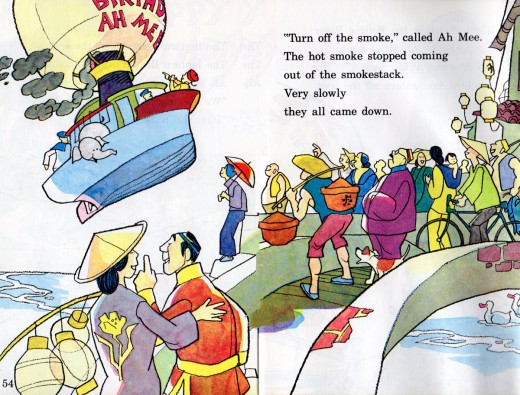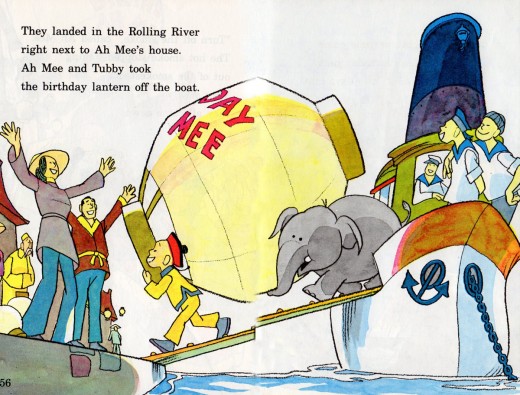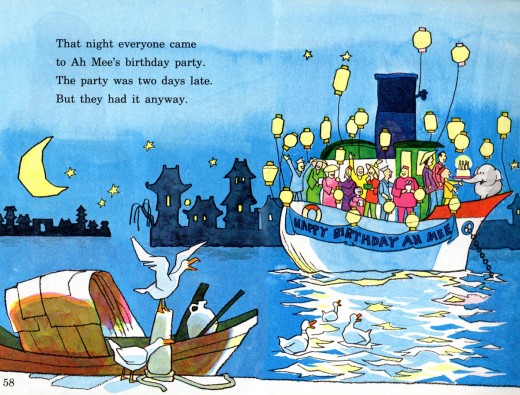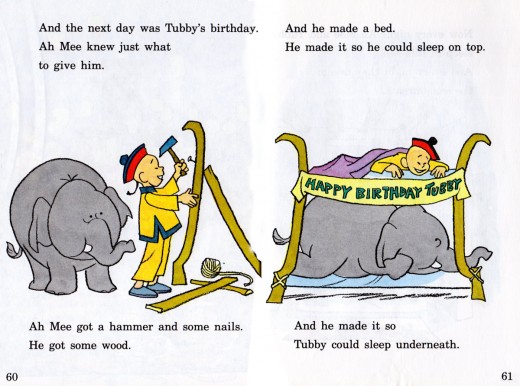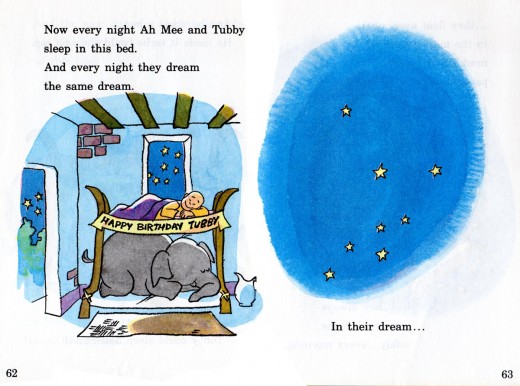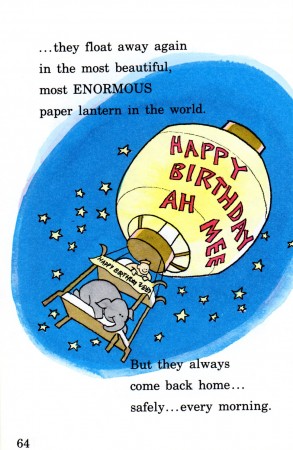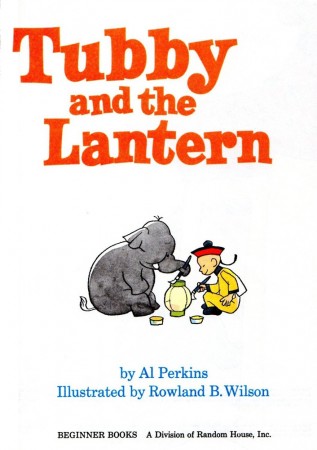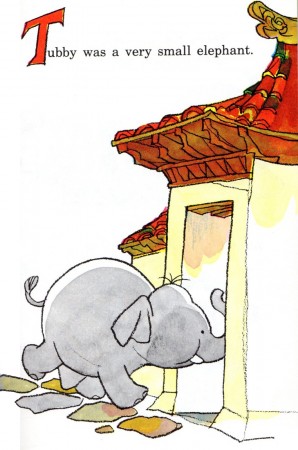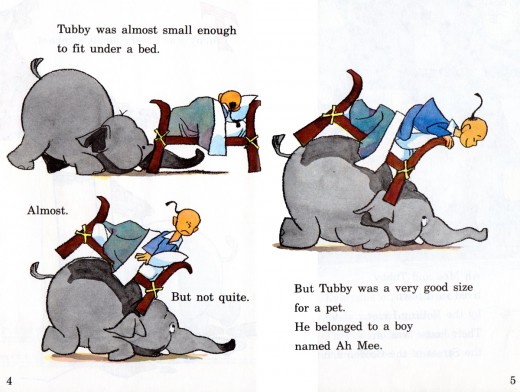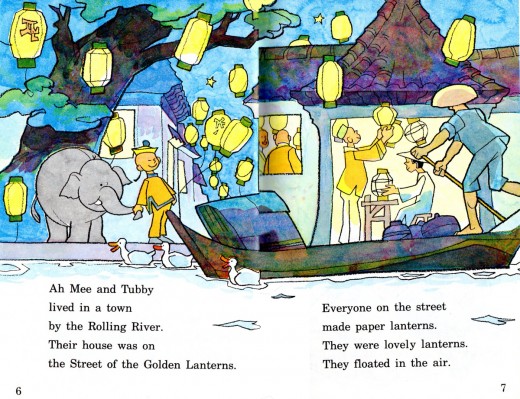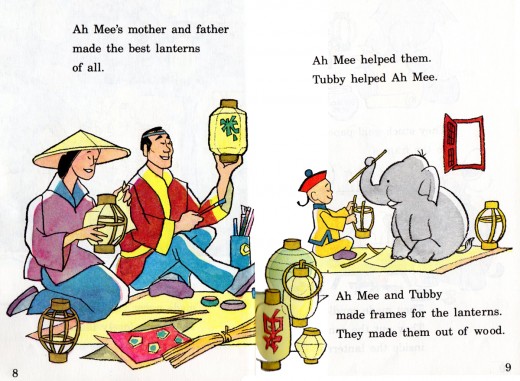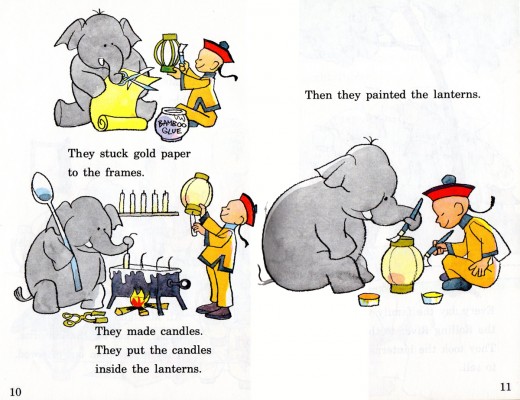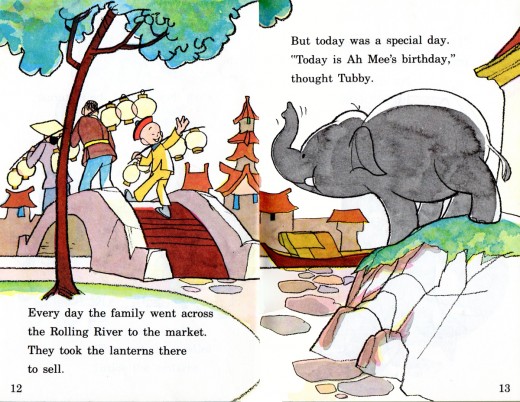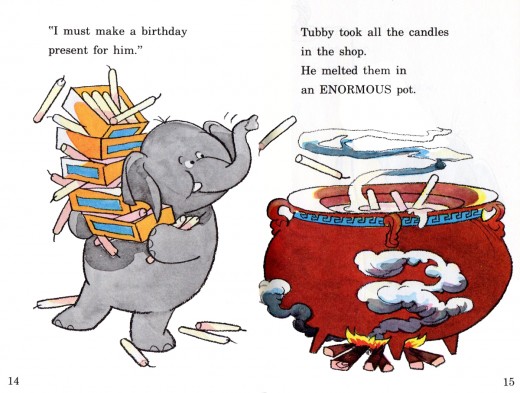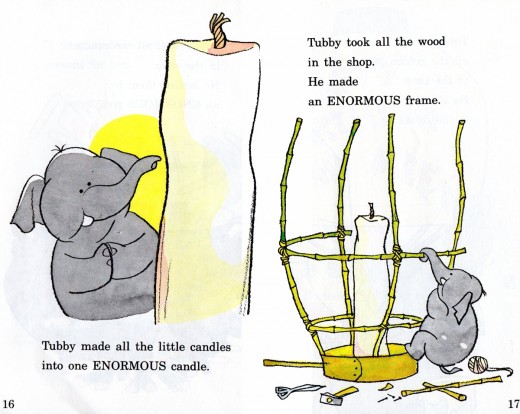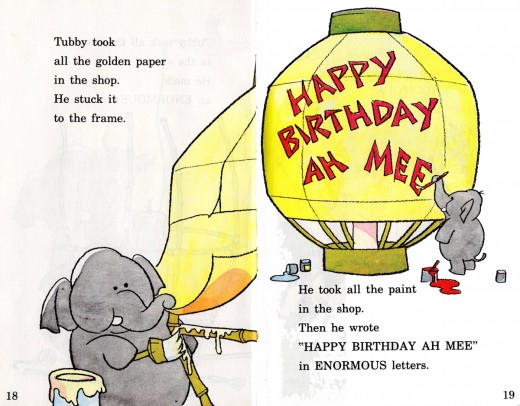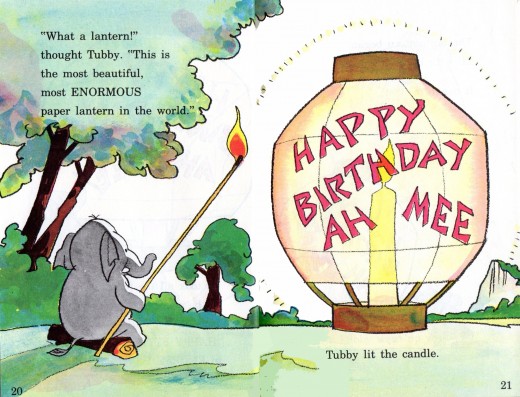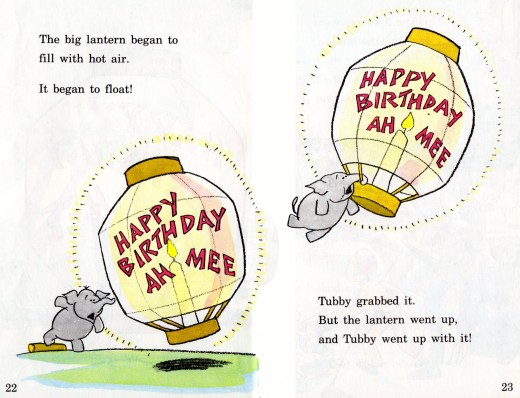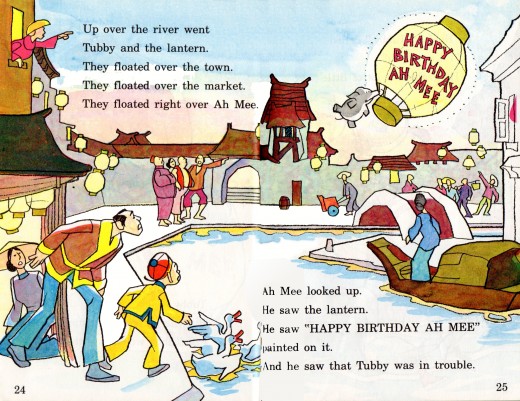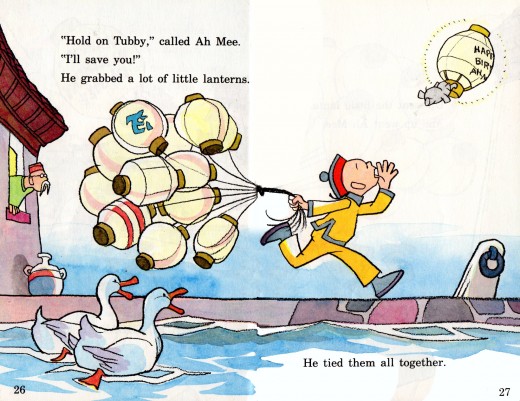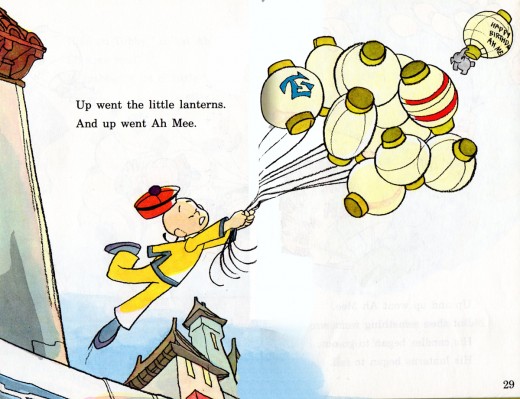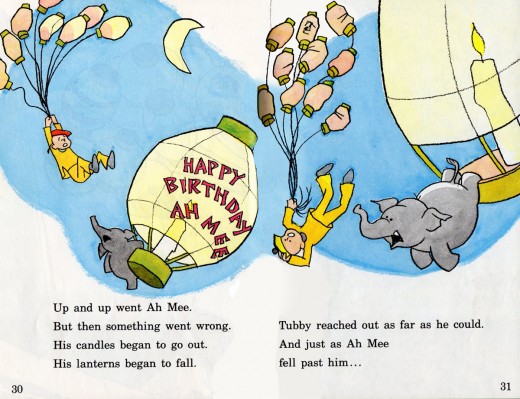Category ArchiveBooks
Bill Peckmann &Books &Daily post &Illustration 18 May 2012 06:01 am
Keith Ward Sampler
Keith Ward is an illustrator whose work was highly admired by Rowland B. Wilson who introduced it to Bill Peckmann. Bill introduced it to me, and I’m posting this sampler here. We’d originally posted xerox copies of some of these, but the following material comes directly from the printed page. Here’s Bill to take over the post:
- Here’s a treat for all fans of illustrator Keith Ward. It’s with of the kind generosity of knowledgeable collector Denis Wheary that we can scan some of the pages of Ward’s children’s books that were done during the period of 1930 to 1952.
Born in 1906, Keith Ward is one of the stellar illustrators of the 20th century. A true renaissance man, he touched all the bases of art, whether fine or commercial. In the field of illustration, he deftly rounded the bags with his book, editorial magazine and advertising art. His 1945 book illustrations were said to be the inspirations of a Disney feature. (More of that in the second post.) Borden’s “Elsie the Cow” was Keith’s unsigned classic for us kids growing up in the ’40′s and ’50′s.
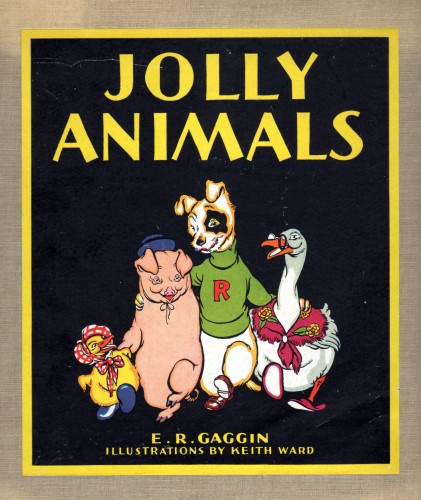 1
1The following pages of “Jolly Animals” is from 1930,
done when Ward was only 24 years old, amazing!
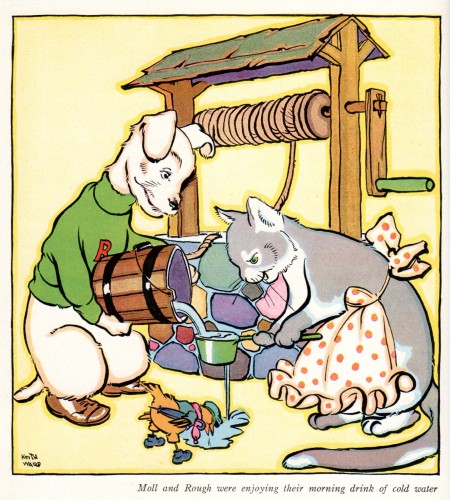 2
2
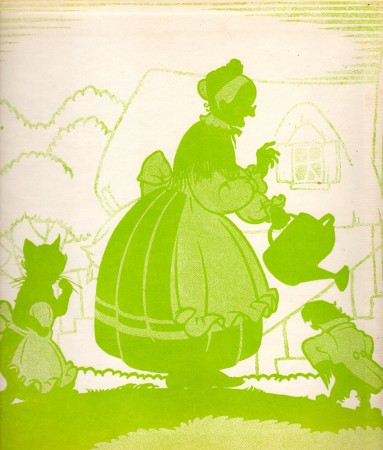 9
9
Even KW’s inside end covers of “Jolly Animals” are worth studying!
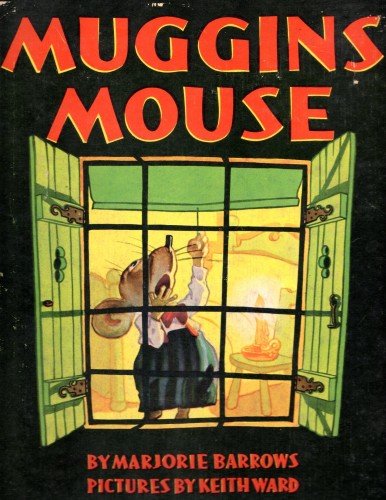 10
10
“Muggins Mouse” from 1932. We posted this book already, but
those were color photo copies and harsh Xerox copies of the B&W pages.
So here are a few cherry picked B & W pages to show
what the softness of the original book looked like.
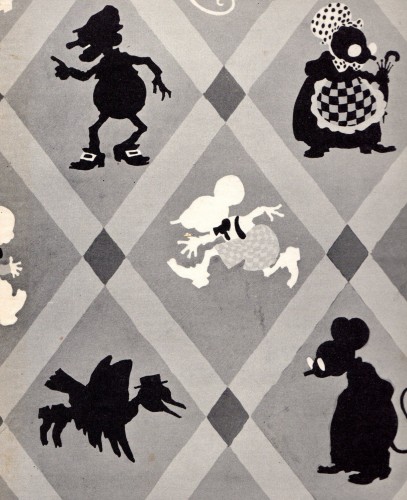 19
19
“Muggins Mouse” inside end cover.
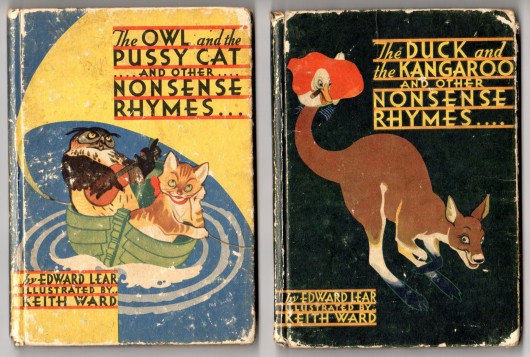
Here are two pocket sized hardcover books also from 1932.
Here are a few beautiful chapter headings and pages from these two tiny marvels.
Books &Illustration &John Canemaker 15 May 2012 06:40 am
Les Passagers de la Grande Ourse
- Back in 2006, I posted a couple of pages of this book and, having found the film now on line, I thought it time for a new look at this Paul Grimault classic from 1942.
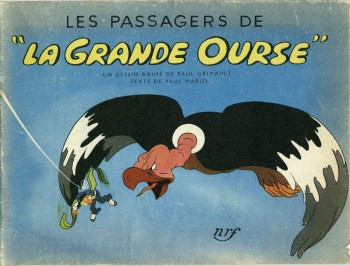 – In 1942 Paul Grimault released an animated film entitled Les Passagers De “La Grande Ourse.” The film had actually been completed in 1939 and titled The Passengers of the Great Bear, but because of the outbreak of WWII the film suffered setbacks and was released in 1942 with the new title.
– In 1942 Paul Grimault released an animated film entitled Les Passagers De “La Grande Ourse.” The film had actually been completed in 1939 and titled The Passengers of the Great Bear, but because of the outbreak of WWII the film suffered setbacks and was released in 1942 with the new title.
Several years ago, John Canemaker gave me a gem of an attractive little book that was illustrated with images from the film. Grimault was the father of French animation, and I’d always assumed that this film was a feature. In fact, it was a nine minute short, but it was important historically because it was the first big French animated production trying to out-Disney Disney.
The story is very unlike American films. There’s a fanciful sense of imagination that is true of many French cartoons. In summation the story is:
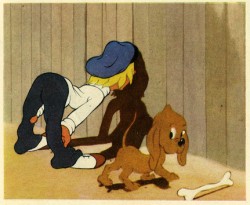 A little boy and his dog sneak into a shipyard and are grabbed by a crane which places them on a ship in dock, loading. This ship, “The Grand Ourse,†is an oddity in that it is fitted like a zeppelin with balloons to lift it into the air.
A little boy and his dog sneak into a shipyard and are grabbed by a crane which places them on a ship in dock, loading. This ship, “The Grand Ourse,†is an oddity in that it is fitted like a zeppelin with balloons to lift it into the air.
Boy and dog arrive in their compartment, accidentally, as the vessel starts to take-off into the sky. Adventures ensue with the boy and dog confronted by a restive eagle and a deaf and dumb robot
Here are some of the pages of the book:
A carbon copy of the credits for the film was enclosed within the book when I received it.
It was copied onto one of those pieces of paper that could only be European, sort of a tissue that seemed delicate.
That’s attached to the left.
This past week I found a nice copy of the film posted on YouTube. You can watch it.below, and see how it compares to the published book.
Les Passagers de la Grande Ourse (Paul Grimault – 1941)
Bill Peckmann &Books &Illustration 11 May 2012 05:54 am
Tripp’s Sir Toby Jingle – part 2
- Last week we saw the first half of Wallace Tripp‘s book, Sir Toby Jingle’s Beastly Journey. Today we conclude our post of the book. Wallace Tripp is certainly an influence on many animator’s work. His fluid drawings look like animation work. Many thanks to Bill Peckmann for scanning the book and sending these pages on to us.
Here, then, is part 2:
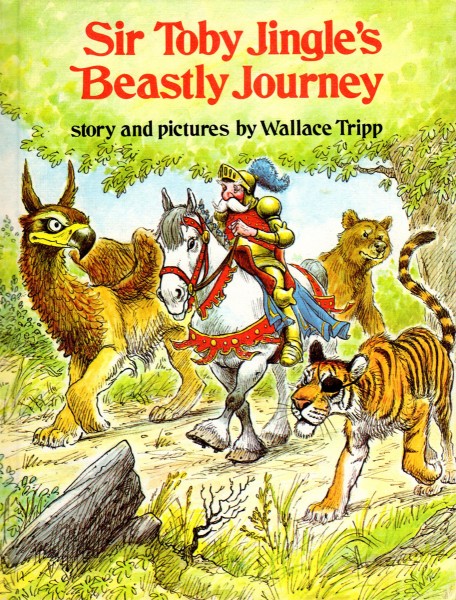
Front Cover
Animation &Books &walk cycle 10 May 2012 06:44 am
Terry – Cat Walk
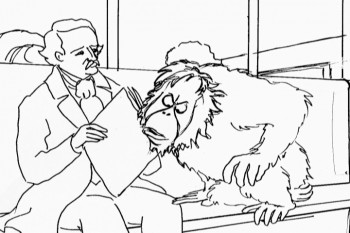 - Before going directly into the subject of today’s post, let me give a little twist toward our current on line promotion, Indiegogo.
- Before going directly into the subject of today’s post, let me give a little twist toward our current on line promotion, Indiegogo.
As you may know, we sought funds on Kickstarter a few weeks back trying to raise some cash to create a terrific trailer for POE, the animated feature we’re seeking to produce. That fund raising scheme wasn’t as successful as we’d hoped; money offered was not collected, and we’re taking what we’d learned and moved to a different venue, Indiegogo. There, we’ve started from scratch.
POE is a film we’d like to produce and are hoping we’re not too far from the starting gate. SSince we’ve developed a script, drawn a storyboard, created about 20 minutes of animatic (story reel) from the few voices we’d recorded, the next and most likely step would be to animate some of it and get it to our sales group to help raise the necessary capital. That’s where we are. If you’ve already given your support to this project, I thank you sincerely. If you’re not aware of it, I encourage you to look at the website for POE, poestory.net, or the Facebook page, or Indiegogo where all the action is happening. Moral support is almost as good as financial. If you’d like to tell any of your friends about it. I’d appreciate that too. In all, I have to say Thank you for your help.
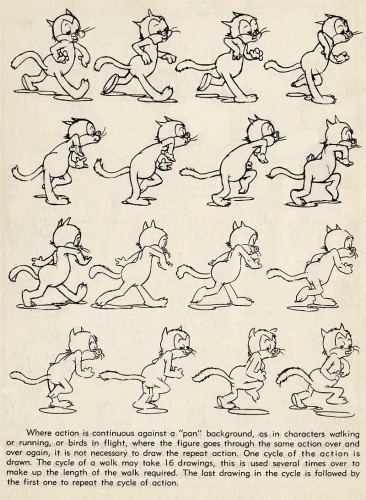
- Stephen Worth at Animation Resources recently posted anew his copy of Nat Falk’s How To Make Animated Cartoons. When I was a kid I cherished my copy of this book – actually it was a library booik, but I was the only one who ever checked it out of my local library, and I basically had it out permanently. There was something about those clumsy looking Terrytoon drawings that I absolutely enjoyed. (Don’t forget that the Mighty Mouse Show was one of the very first Saturday morning TV shows, and every kid my age was affected by it.)
Aside from all the information about studios and drawing characters etc., there were the pages where you could see the animation drawings all lined up, just as in the Preston Blair book. It was something I didn’t take lightly. I always was curious how those cycles pictured moved. The one, above, was one that stood out in my memory. I always thought it eccentric and was curious to see it in action.
Well, now I can do it given the simple technology at hand. So I put the page through Photoshop and layered the drawings, then dragged it past AfterEffects, and behold a QT movie. Here’s the results, pictured below:
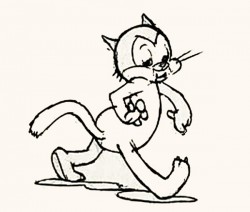 1
1
And here’s the QT movie of the cycle.
It’s on two’s, and
it’s not a pretty picture.
I think Carlo Vinci may have animated it.
I did a similar thing, in a different post, using another walk cycle from this book. That was done in 2009. A cycle of “Puddy the Pup.” That worked a little better but not by much.
Bill Peckmann &Books &Illustration 04 May 2012 07:19 am
Tripp’s Sir Toby Jingle
- After posting Wallace Tripp‘s book, Granfa Grigg Had A Pig, it became obvious to me that we had to post more. Bill Peckmann sent this first half of the book, Sir Toby Jingle’s Beastly Journey. It was illustrated AND written by Tripp and is a delight. The drawings are beautiful, and the book has a great flow. I hope you enjoy it.
 1
1
to be concluded next week.
.
_________________________
- And now a word from our sponsor. I’d be remiss if I allowed a post to pass without the mention of our fundraising campaign for POE. That is, of course, the feature we are promoting, the feature we are trying to finance and hope to raise enough money to get a trailer completed. To that end, we’ve established a spot on Indiegogo a week ago where we are aiming for the highest. Please visit the site, tell your friends to tell their friends, and perhaps we’ll reach our goal. Many thanks, regardless, for your wonderful support.
Bill Peckmann &Books &Comic Art &Disney 27 Apr 2012 05:11 am
Paul Murry’s Comix
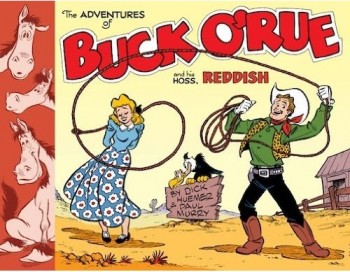 - With great excitement and anticipation, comic lovers learned this week that Paul Murry and Dick Huemer‘s Buck O’Rue comics compilation would be available in June. Bill Peckmann sent me the following note and material:
- With great excitement and anticipation, comic lovers learned this week that Paul Murry and Dick Huemer‘s Buck O’Rue comics compilation would be available in June. Bill Peckmann sent me the following note and material:
- Buck O’Rue was a short lived comic strip I didn’t know about; it was done by two Disney greats, Dick Huemer and Paul Murry. The new book is a real labor of love by the author, good friend Germund Von Wowern, and in celebration of the new book due to come out soon, I thought I’d send you a small 21 page, Whitman Sampler box of some of Murry’s comic book work.
Perhaps best known for his wonderful Mickey Mouse comic book adventure stories, he also deftly handled any assignment that Dell Comics threw his way. Here are some outside the adventure story box examples of single page gags, a Donald Duck story and a Disney film adaptation. All of his pages are always bursting with well designed and drawn life!
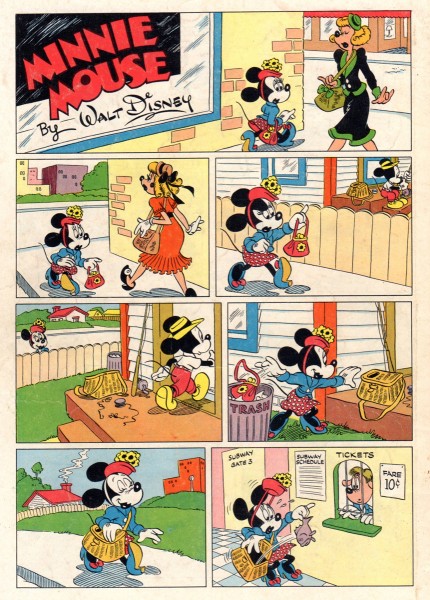 1
1
Bill Peckmann &Books &Illustration 24 Apr 2012 06:36 am
Tripp’s Granfa Grig
- Wallace Tripp has to have been the source of inspiration for many an animator in the last fifty years. His artwork is so rich and round, his characters so full of life, and his watercoloring so masterful. No one can tell me that Ken Anderson‘s style, from “Robin Hood” on, didn’t emanate from Tripp’s illustrations. I know back in the seventies, many in animation talked about him and bought his books. Those calanders were everywhere.
Bill Peckmann reminded me of this by sending me the following illustrations. Here’s Bill:
- Two difficult tasks. Task number one, of all of Wally Tripp’s exceptionally wonderful books, pick your favorite one, and then task number two, pick your favorite pages. Hopefully these pages from Wally’s Granfa’ Grig Had a Pig will fill the bill on both counts for your readers new and old to Mr. Tripp’s mastery of pen and paint brush.
(Sorry to leave out the real blockbuster pages of the book, the double page spreads, unfortunately my puny scanner will not do these pages justice.)
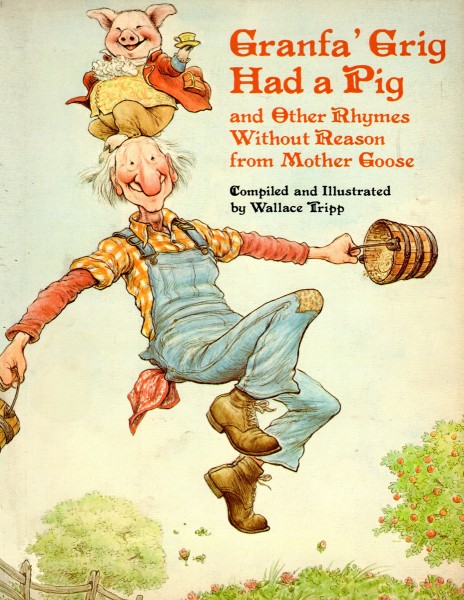
Book cover
And here’s a page of one of popular the calendars that came out annually.
Bill Peckmann &Books &Illustration &Rowland B. Wilson 18 Apr 2012 06:33 am
Tubby and the Lantern – pt. 2
- Here’s the conclusion of Tubby and the Lantern, the children’s book illustrated by Rowland B. Wilson and written by Al Perkins. Bill Peckmann has kindly sent scans of the double paged art of the book. We pick up where we left off . . .
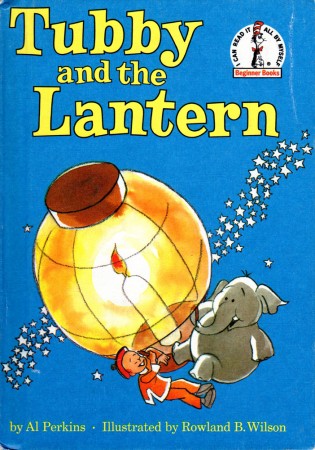
The book’s cover
Bill Peckmann &Books &Illustration &Rowland B. Wilson 10 Apr 2012 07:42 am
Tubby and the Lantern – pt. 1
- Tubby and the Lantern is a book illustrated by Rowland B. Wilson and written by Al Perkins. It was recently sent to me by Bill Peckmann. Here’s Bill’s comment on the book:
- RBW’s book was very good when it came out in 1971, but I’ve got to say that looking at it today, it has a much richer texture to it because we now know what Rowland did with the rest of his life and career. Row’s work is/was always so well thought out, whether it was done in a simple or more robust style.

Book’s cover
.
To be continued.
Books &Hubley &UPA 07 Apr 2012 07:20 am
When Magoo Flew & Jolly Frolics
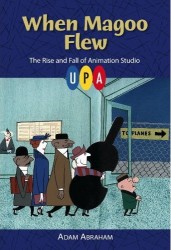 – Adam Abraham‘s new book, When Magoo Flew: the Rise and Fall of Animation Studio UPA, is a gem. It’s an intensely researched and informed book about a studio that has gotten little real attention before this. There have been bits and pieces about specific films and people at the studio, and there’s the extraordinary chapter in Mike Barrier’s Hollywood Cartoons which encapsulates much of the material in this book.
– Adam Abraham‘s new book, When Magoo Flew: the Rise and Fall of Animation Studio UPA, is a gem. It’s an intensely researched and informed book about a studio that has gotten little real attention before this. There have been bits and pieces about specific films and people at the studio, and there’s the extraordinary chapter in Mike Barrier’s Hollywood Cartoons which encapsulates much of the material in this book.
When Magoo Flew starts off in a political mode, and in some way it stays there throughout. Perhaps that’s at the heart of the UPA story. At first, we read about the Disney strike which caused many artists and renegades to leave the Disney studio and strike out for something bigger, freedom to draw in a more modern mode. The book stays with politics as we see the formation of the UPA studio; there’s so much in fighting as partners turn on each other to take control of the studio. Once they’re in the heyday of the studio it’s the politics of who’s doing what. Animosities played a large part. When John Hubley didn’t like the painting of Herb Klynn, (“I cannot stand another touch of that Klynn green!”) he brings the brilliant painter, Paul Julian, into the studio. When Jack Heiter refused to listen to Jules Engel‘s demand to change to color ofthe sky in a background, Heiter was fired. Eventually we move to the politics of the HUAC hearings and the McCarthy era anti-Communist attacks on Hollywood. Finally, it gets down to the politics of selling and reselling the studio and the archives.
It’s a compelling story.
Within this book of politics, we see every film develop and succeed or fail. From Hell Bent for Election to Ragtime Bear (and Mr. Magoo) to Gerald McBoing Boing to Rooty Toot Toot. We see the careers of John Hubley, Bobe Cannon, Pete Burness, and many others develop and grow. All the info is in there: the history of the key shorts as well as the many feature attempts amd the two completed, as well as the mini-bios of all the people. It’s one of those books where you trust the facts and are sure the author did the homework. (The only quibble I had was in his saying that Hubley had one “big” shot at a feature with Watership Down, when in fact Hubley produced and directed two features of his own within his studio, although maybe Abraham didn’t mention them because they weren’t “big”.)
This is what I consider to be an important book in my collection, and I’d encourage everyone interested in animation history to get a copy if they can. At least, get yourself to a library to read it. I’d also like to suggest that you check out Mike Barrier‘s comments about the films of UPA in his review of the DVD. He links to the chapter in his book about the history of the films.
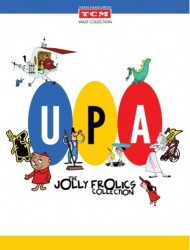 There’s also a companion piece – a DVD that was released by Turner Classic Movies, and it, too, is a treasure. Jolly Frolics, the UPA Collection contains beautifully reconstructed copies of many of the one-off films, the Jolly Frolics. These, for the most part, were the non-Magoo shorts. (There will be an all Magoo release this coming June.) Many were directed by Bobe Cannon, but there are plenty of othrs by Hubley, Babbitt, and Burness as well. (I ceertainly plan to use this DVD to really go into the films and comment on some of them in the future. There’s too much wealth here for me to pass by.)
There’s also a companion piece – a DVD that was released by Turner Classic Movies, and it, too, is a treasure. Jolly Frolics, the UPA Collection contains beautifully reconstructed copies of many of the one-off films, the Jolly Frolics. These, for the most part, were the non-Magoo shorts. (There will be an all Magoo release this coming June.) Many were directed by Bobe Cannon, but there are plenty of othrs by Hubley, Babbitt, and Burness as well. (I ceertainly plan to use this DVD to really go into the films and comment on some of them in the future. There’s too much wealth here for me to pass by.)
The brilliance of Rooty Toot Toot or Gerald McBoing Boing or The Tell Tale Heart stands out against many of the others which here seem even more ordinary. The Man on the Flying Trapeze or Baby Boogie or Giddyap prove that not all UPA films are gems. Like any other cartoon studio’s product, there were good, bad and, mostly, mediocre films.
However, this collection are all marvelously brought back to their original life with this release, and TCM has to be applauded for this first collection of cartoons among their releases. The extras on the DVD includes commentary tracks by Jerry Beck and Leonard Maltin. These are worthless, as far as I’m concerned. Half of their comments involve complimenting the newly found colors of the DVD copies. Neither seems to know more than the basics about UPA. After the first commentary track, they’re all the same. With this DVD, you’re buying them for the fantastic originals on display.
When I was 11 The Gerald McBoing Boing Show premiered on CBS. Anything to do with animation meant it was playing on my family’s TV set. Ohere than these cartoons, everything anmated on TV meant the old B&W WB cartoons featuring the fat Porky Pig. There were early B&W Terrytoons as well, and even some Aesop’s Follies (silent cartoons with classical music tracks added) running on ABS. Of course, there were the special Disneyland TV shows which ran not often enough for my taste.) But the UPA cartoons were different. They looked different, they moved differently, and they struck my young eyes as important. I became an instant fan. I’ve waited for this book and DVD most of my life. It was worth the wait.
